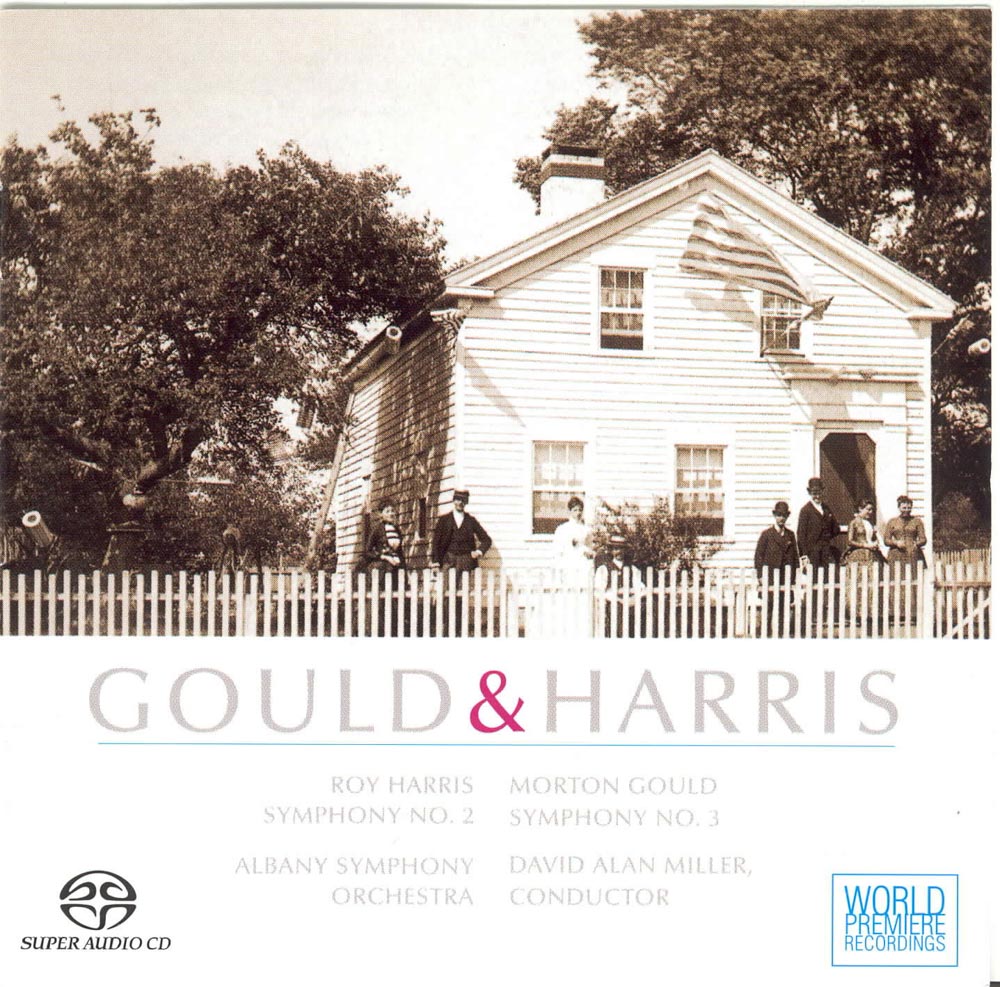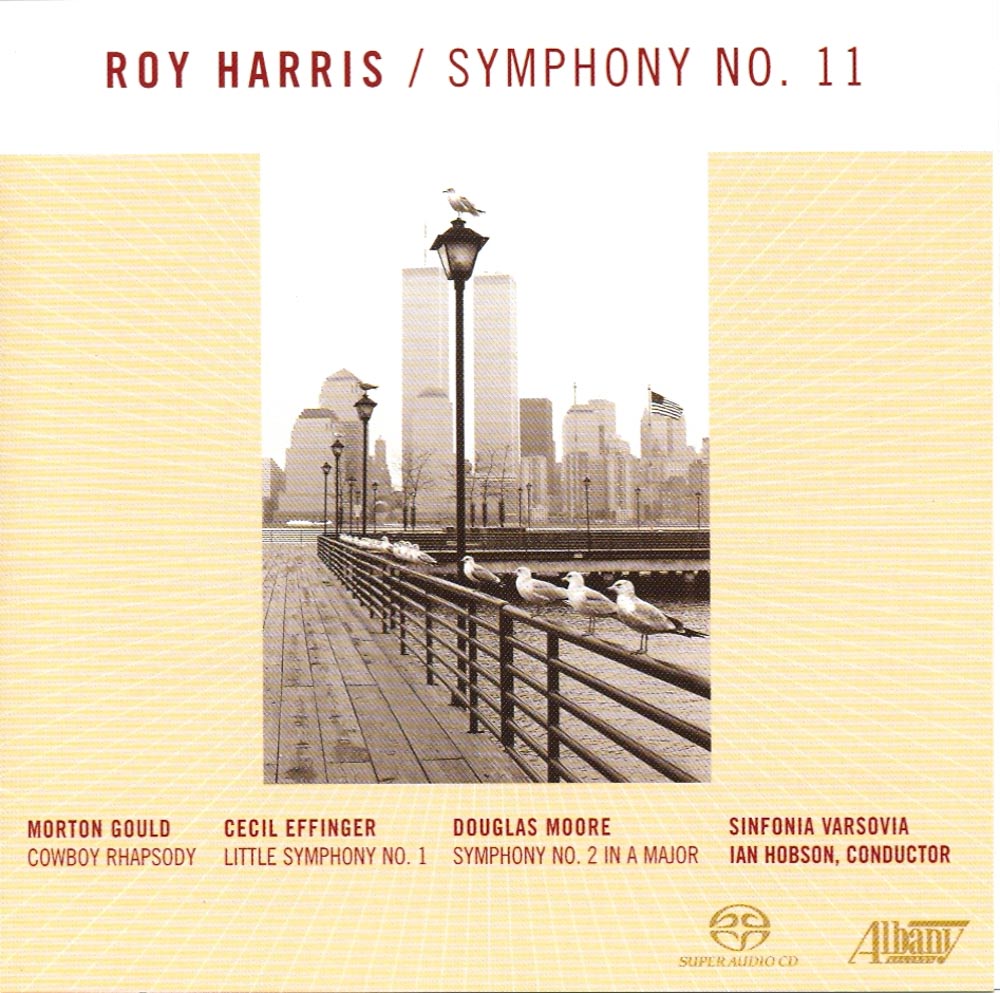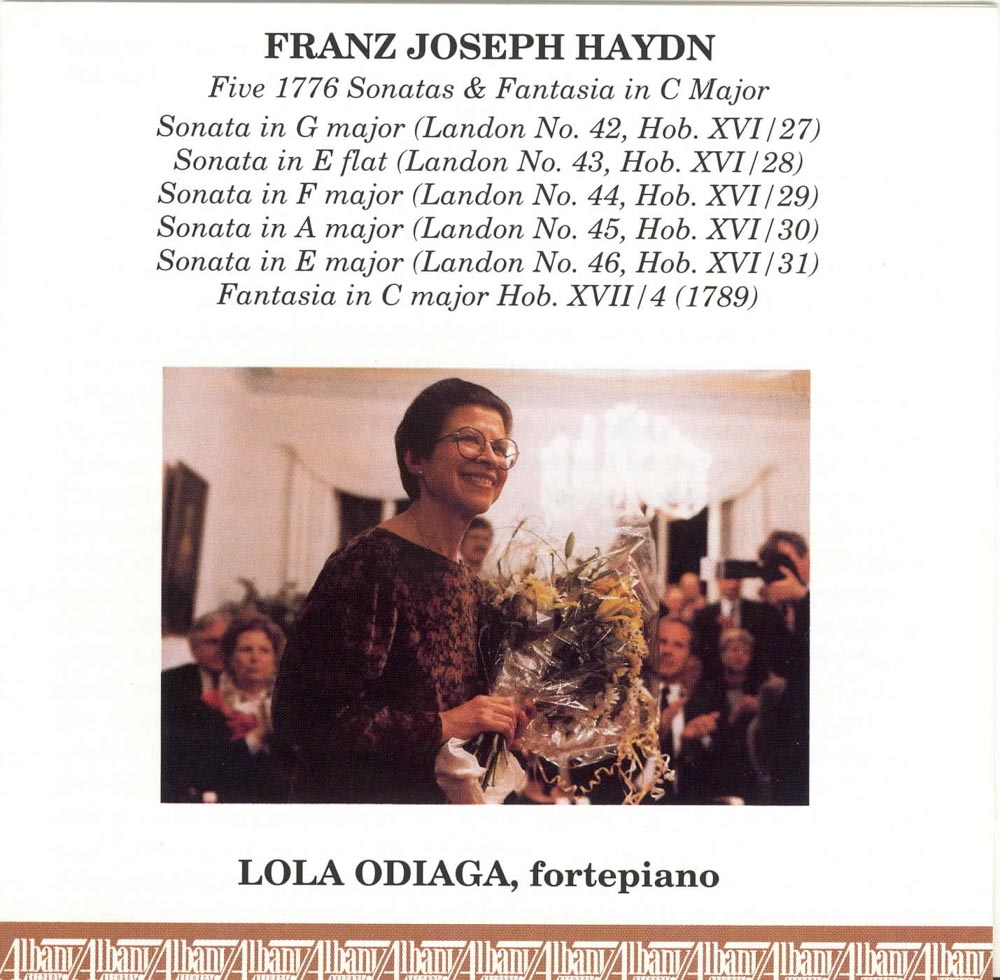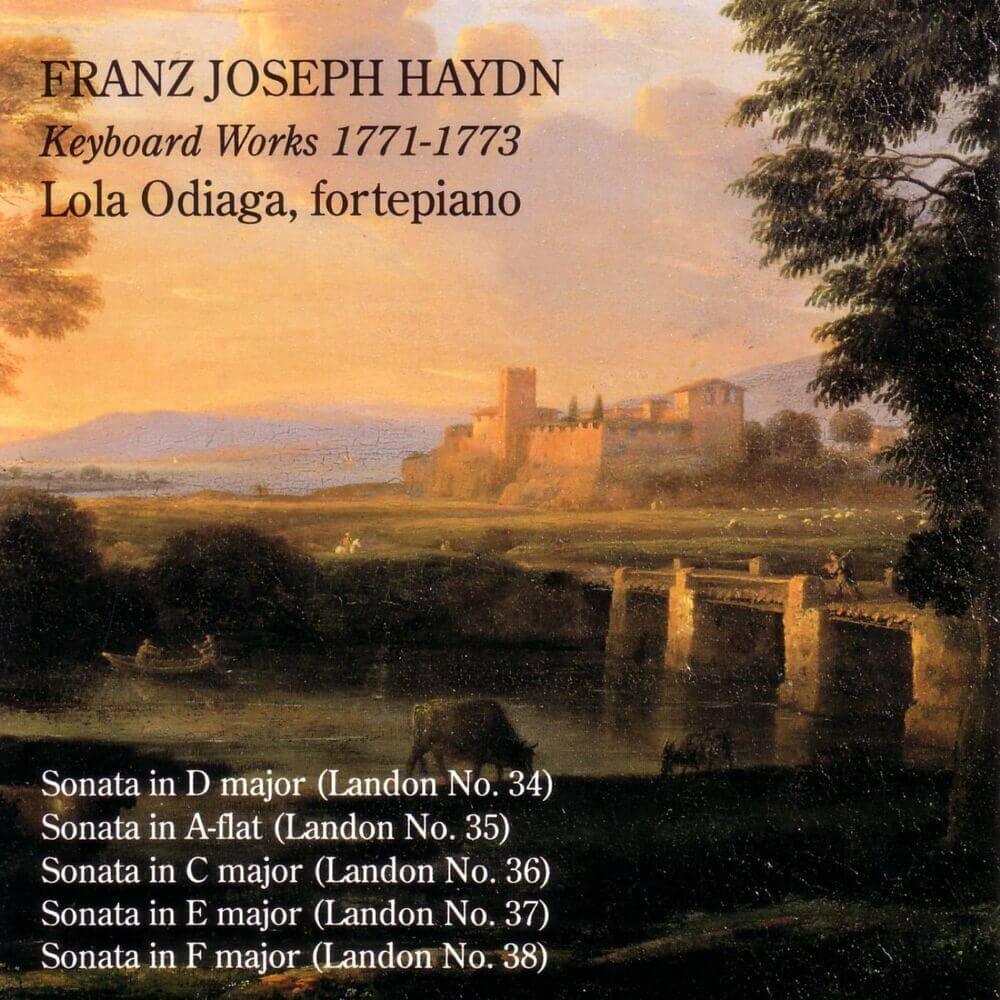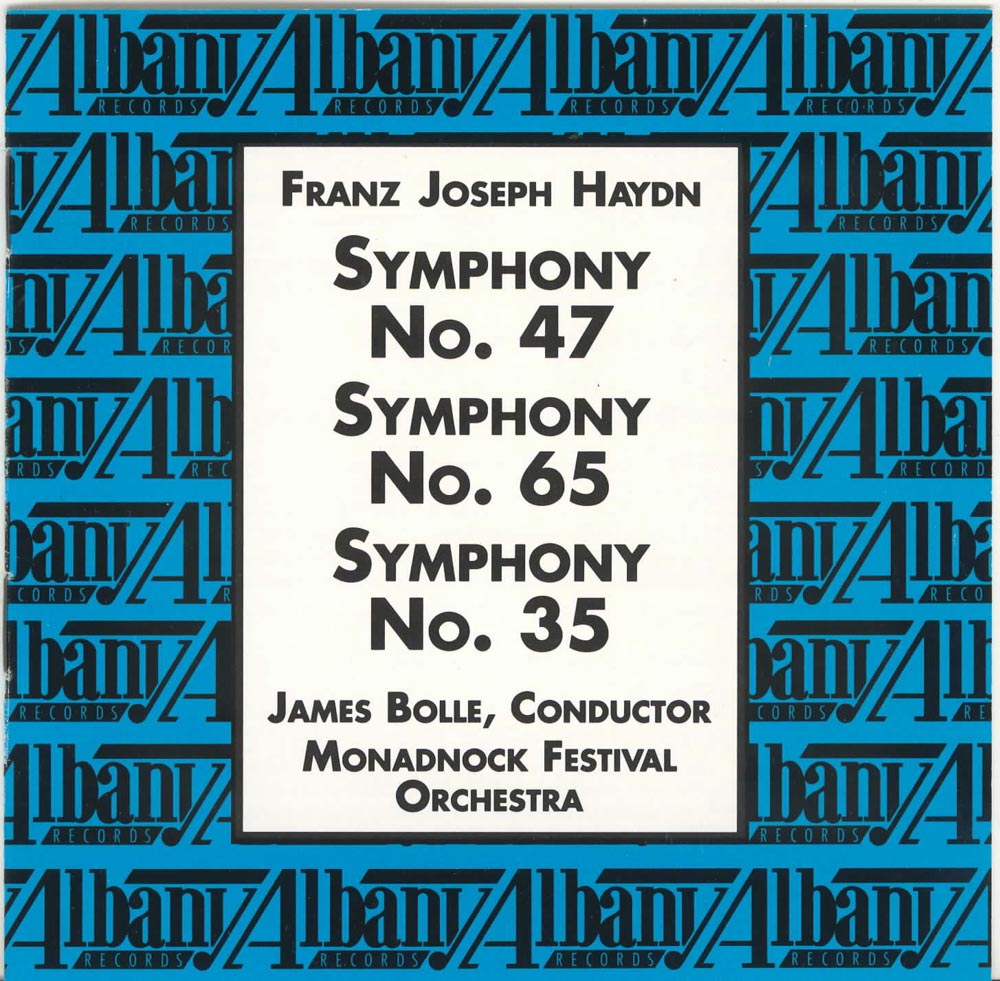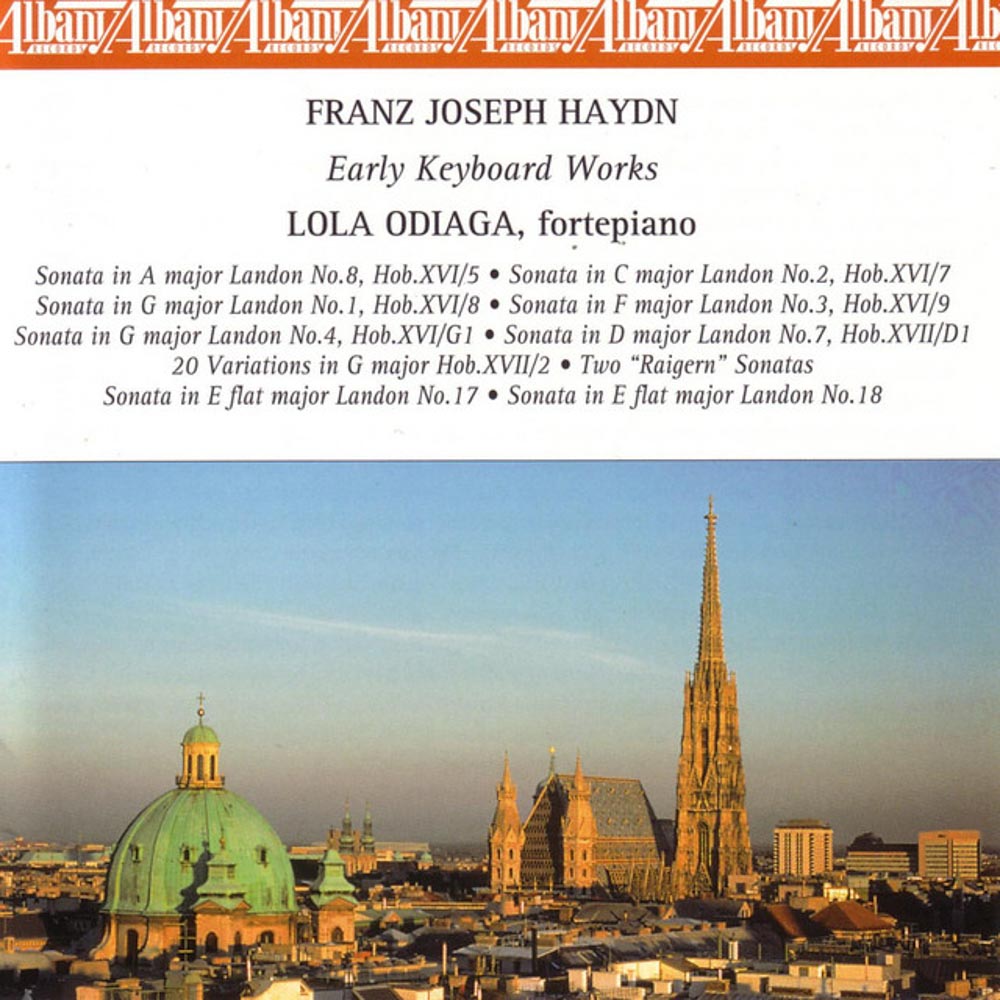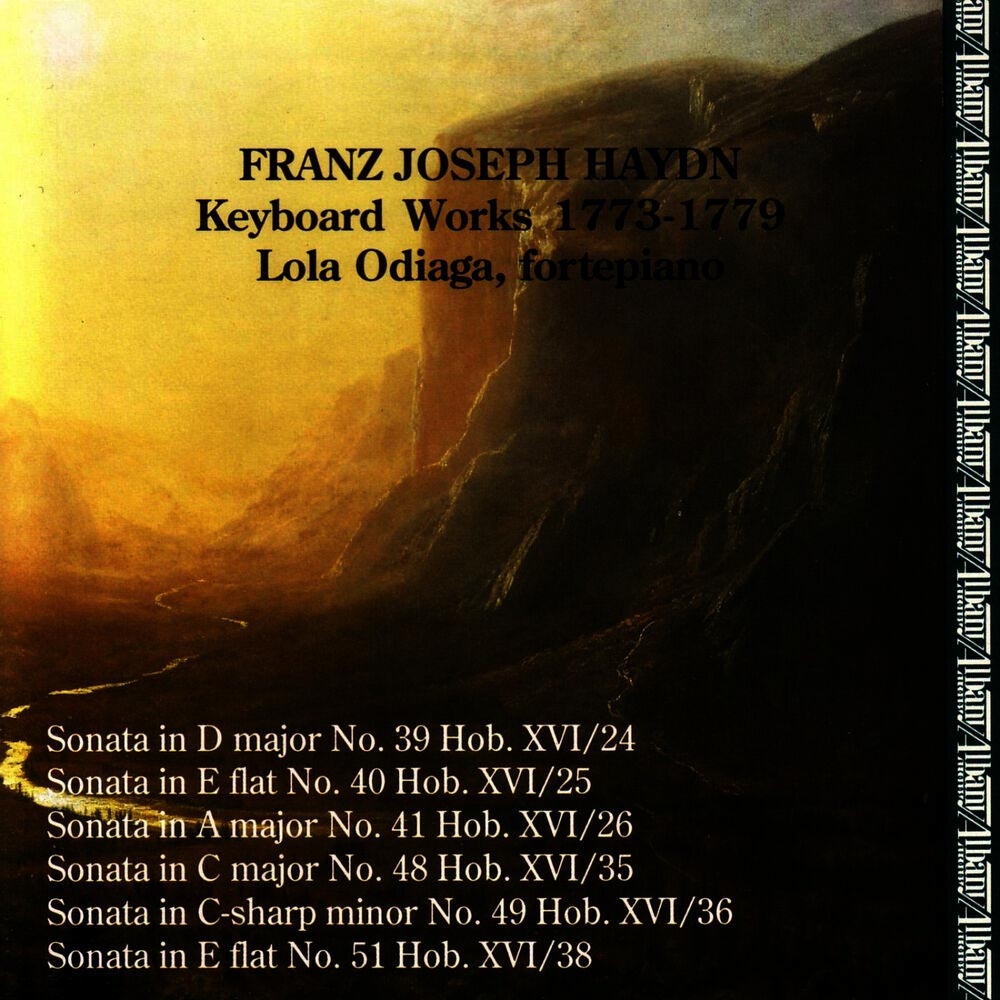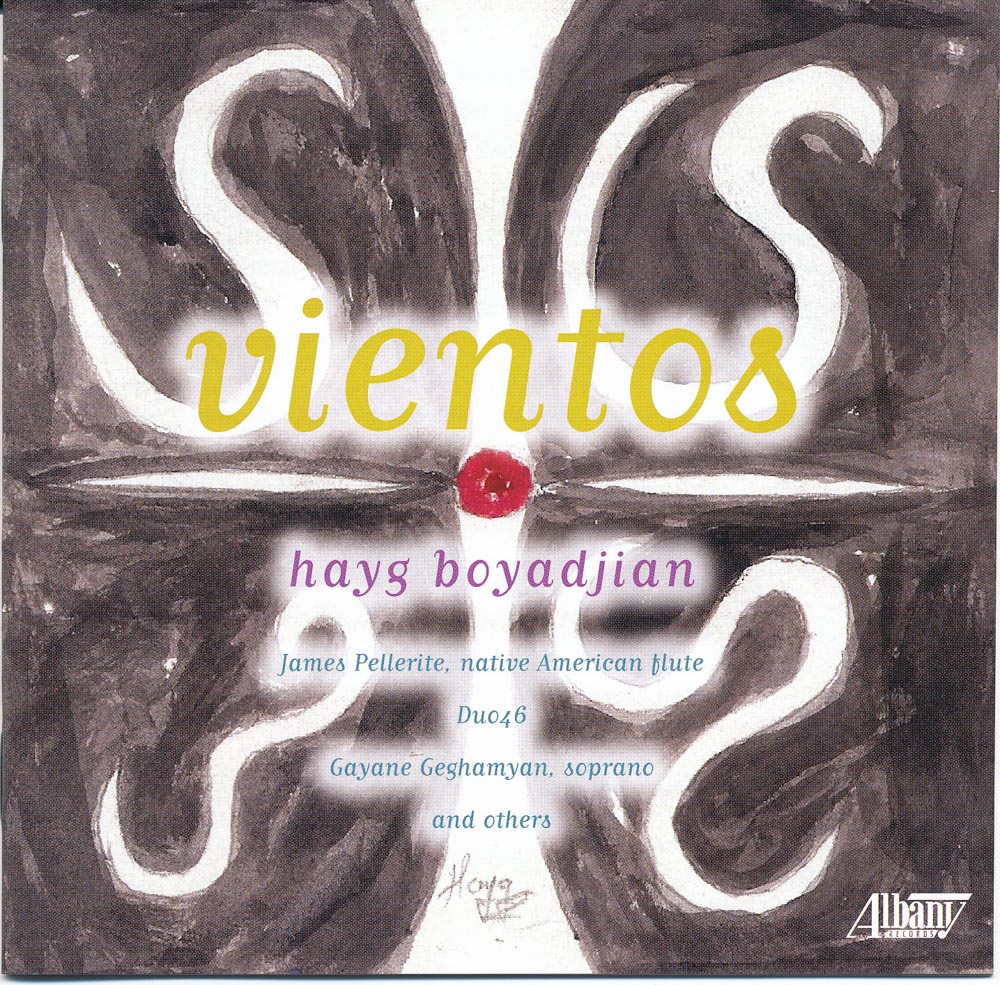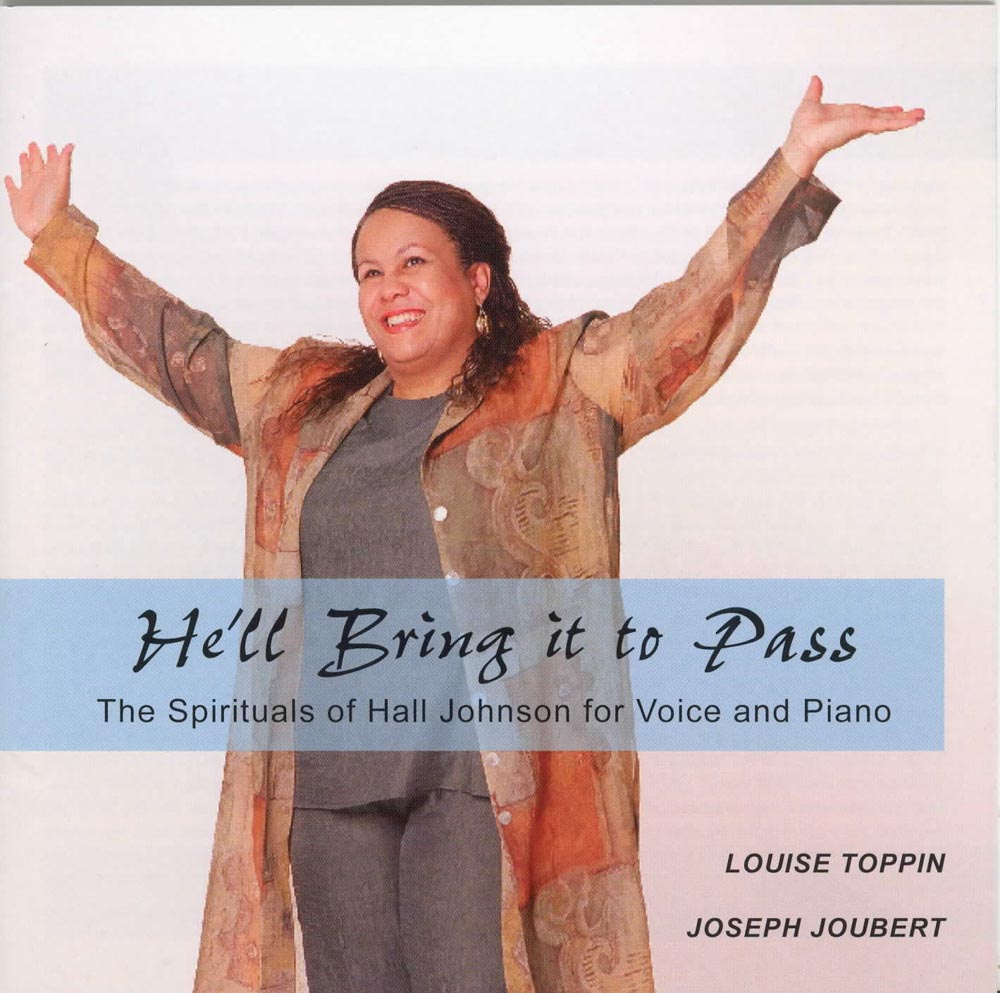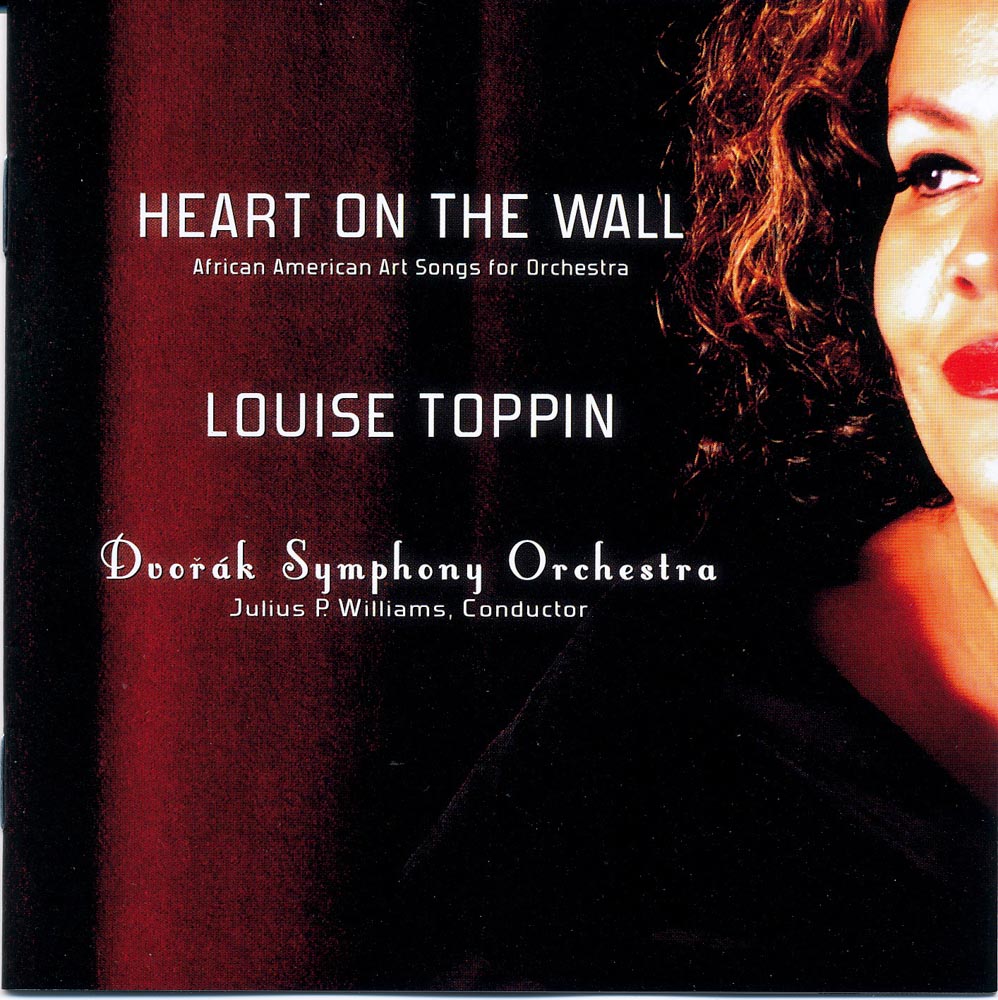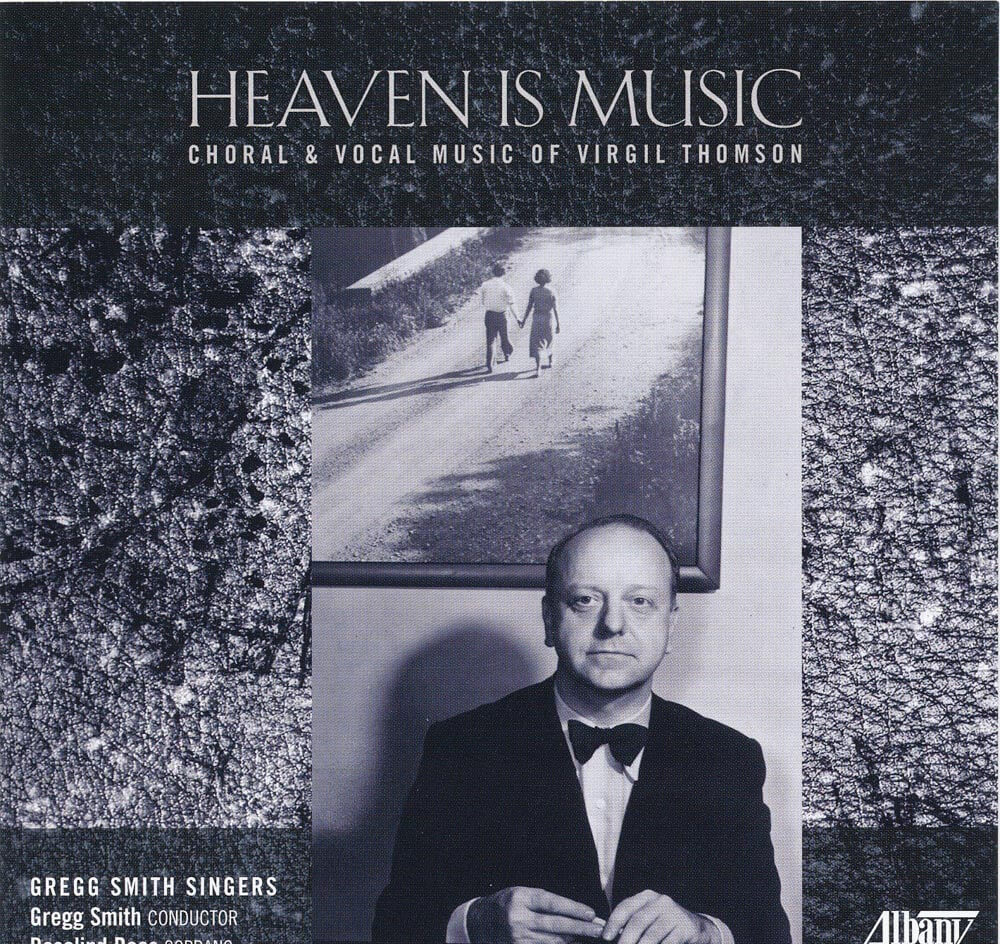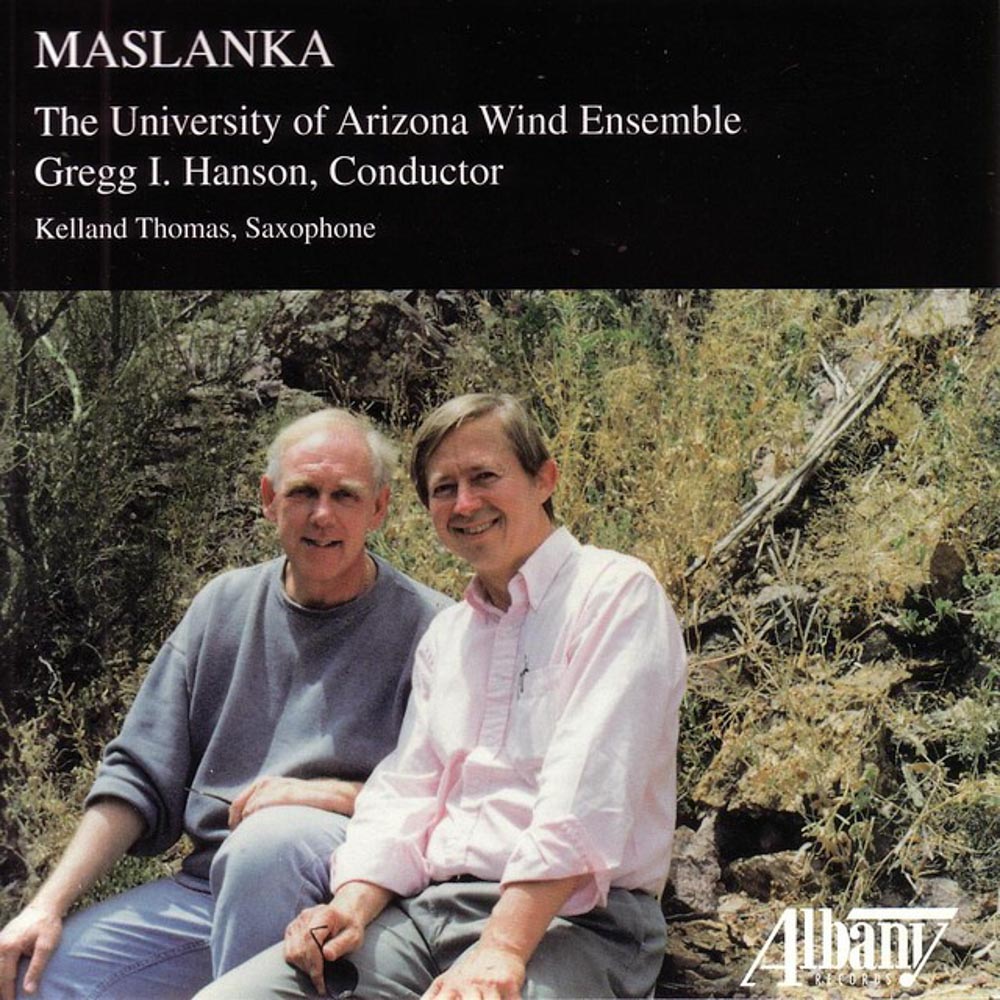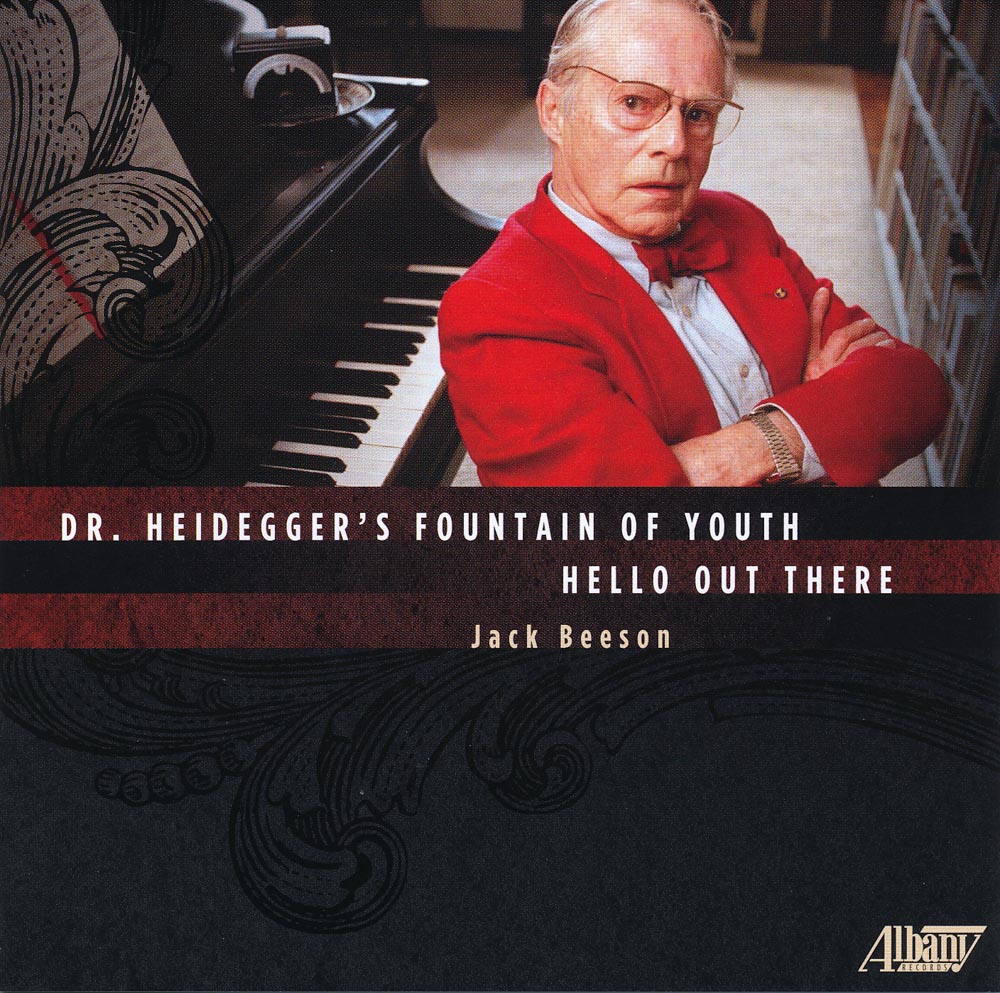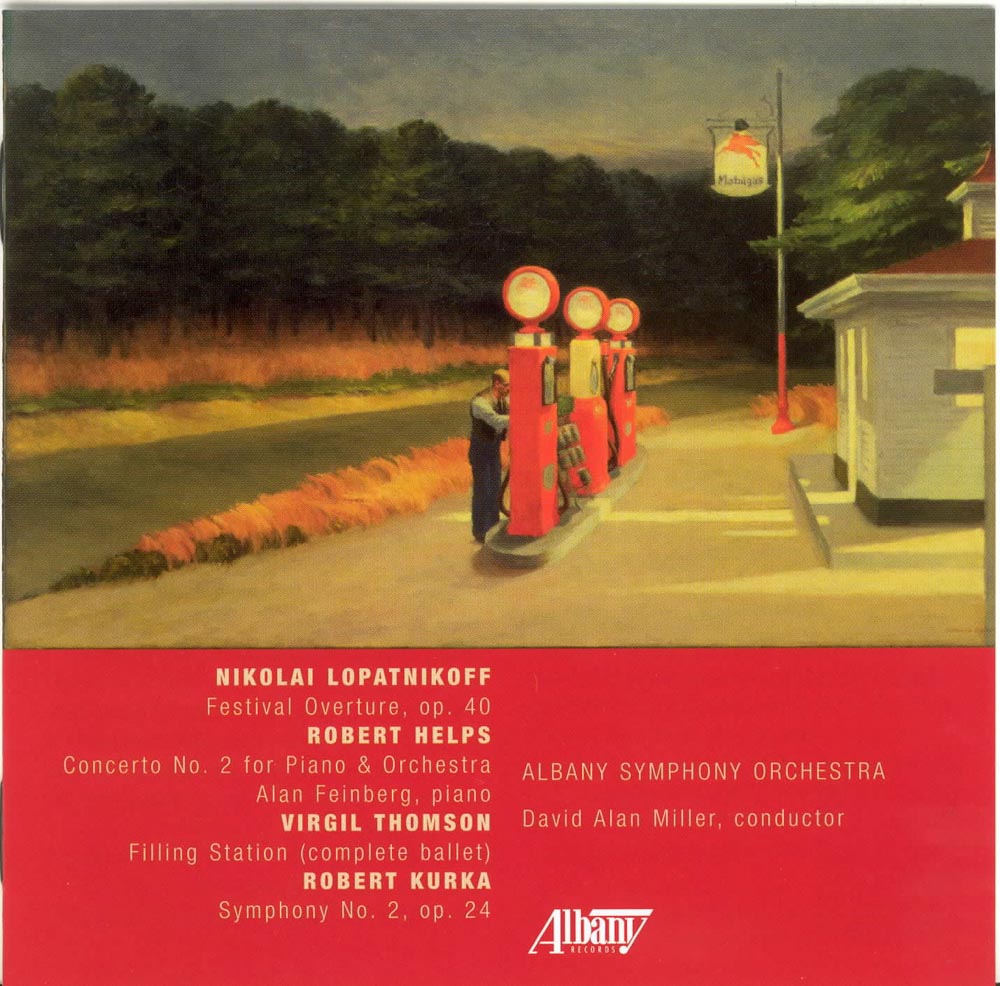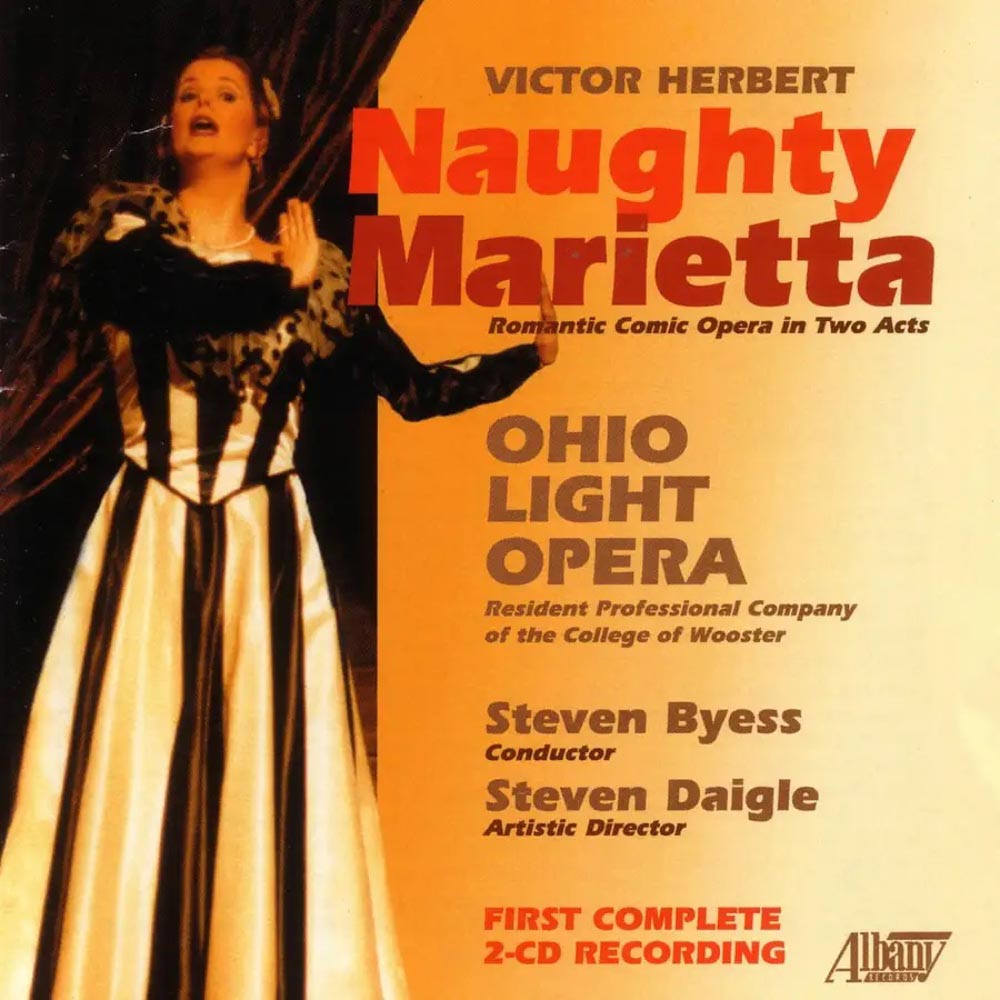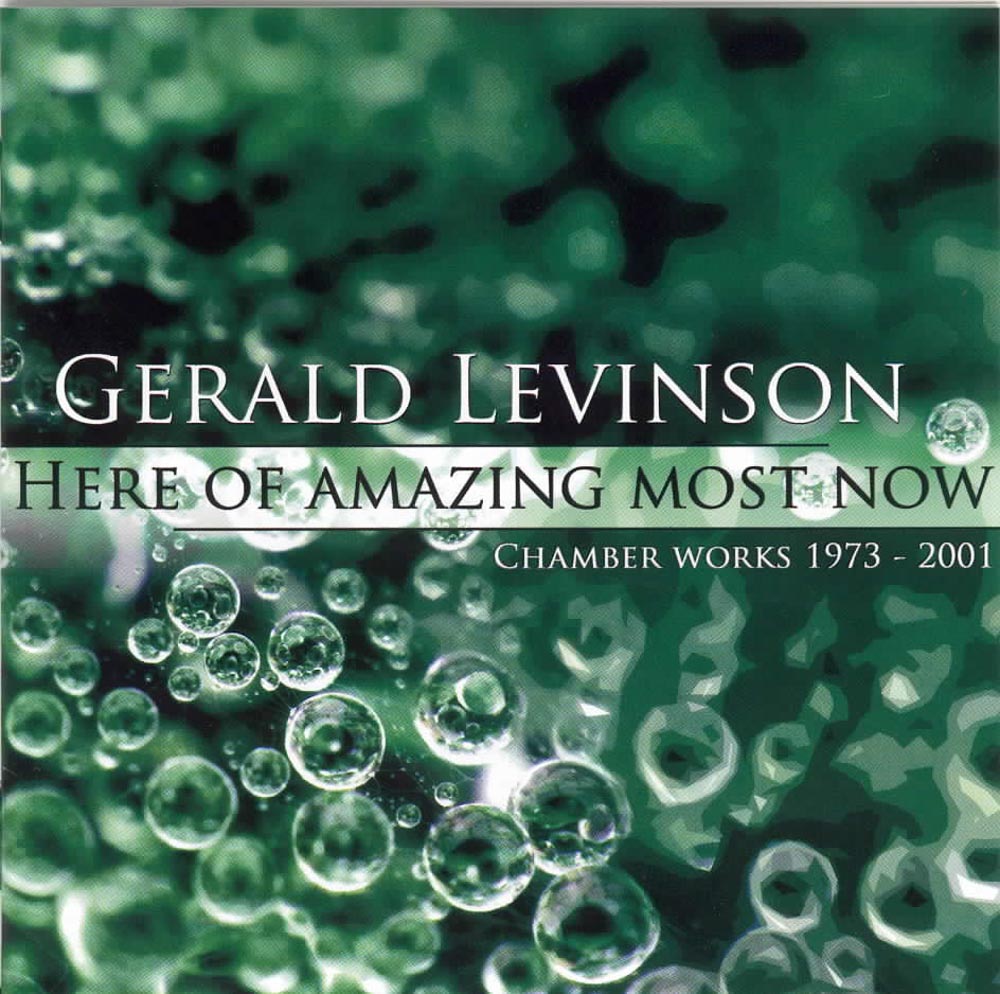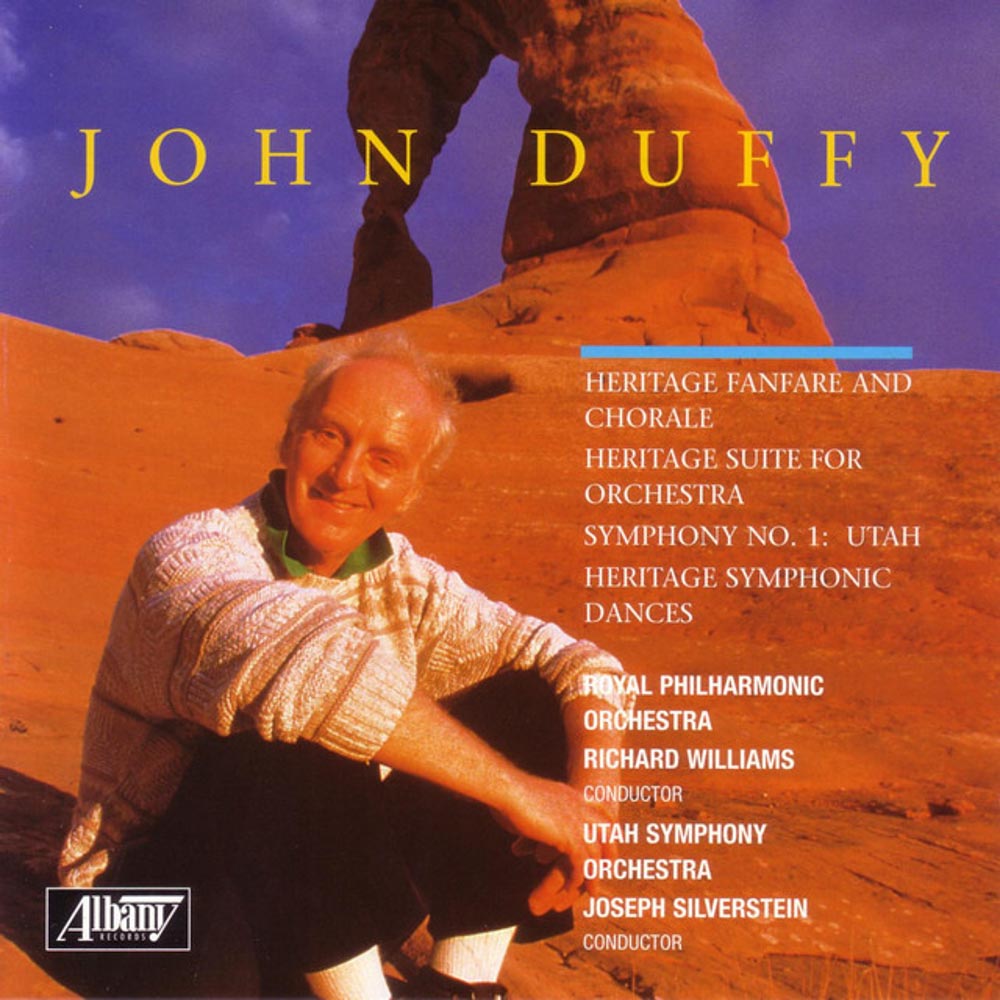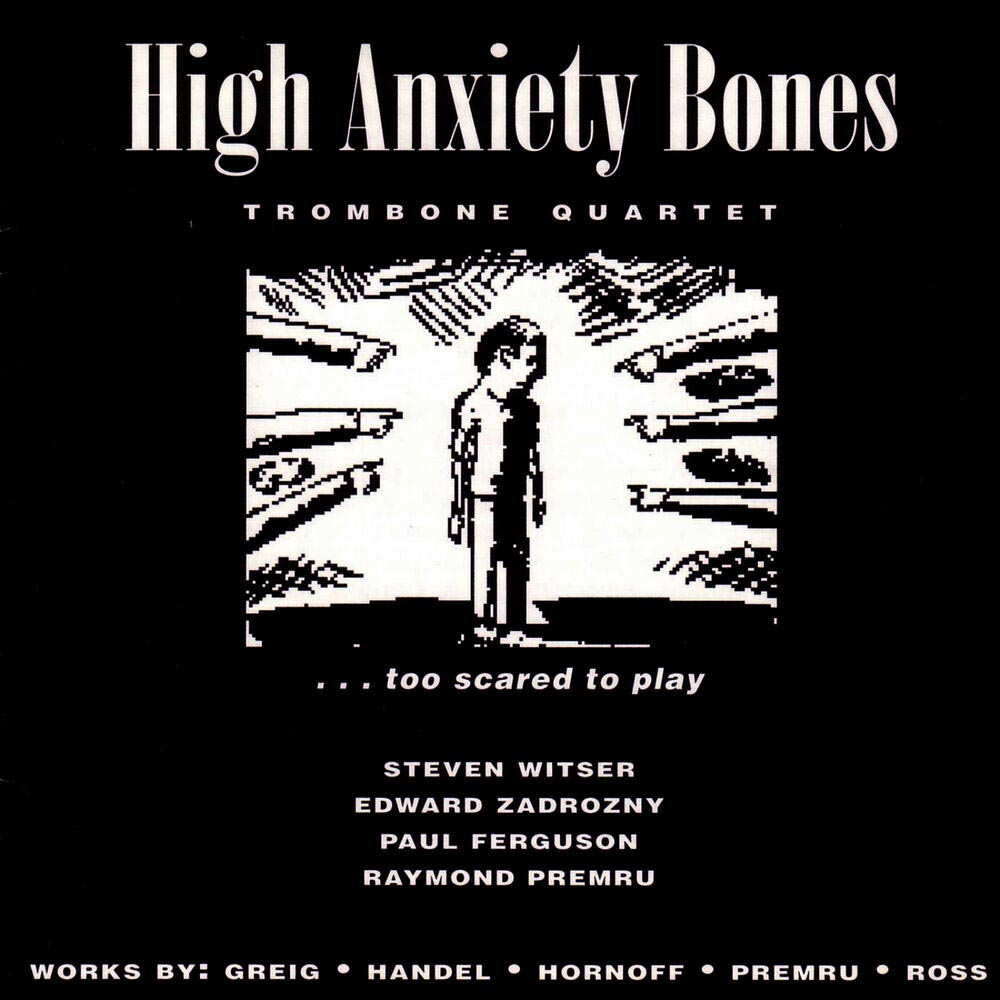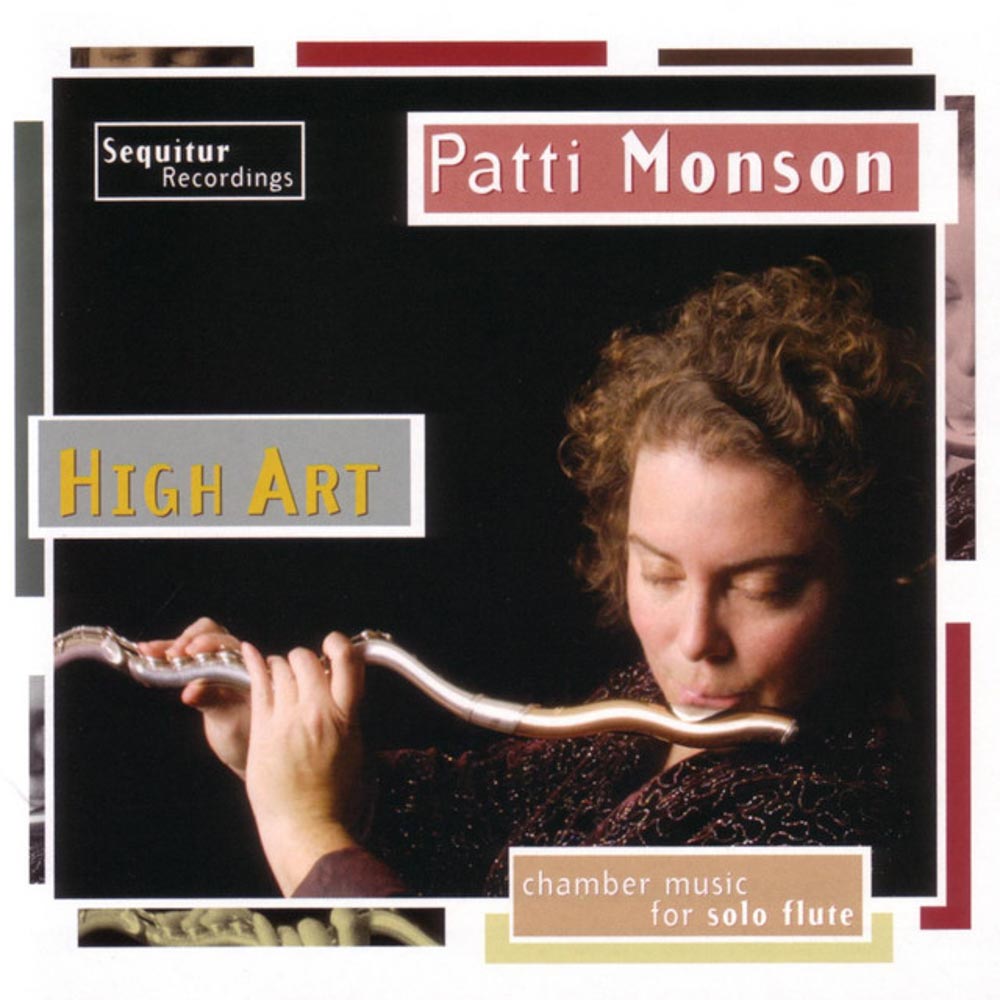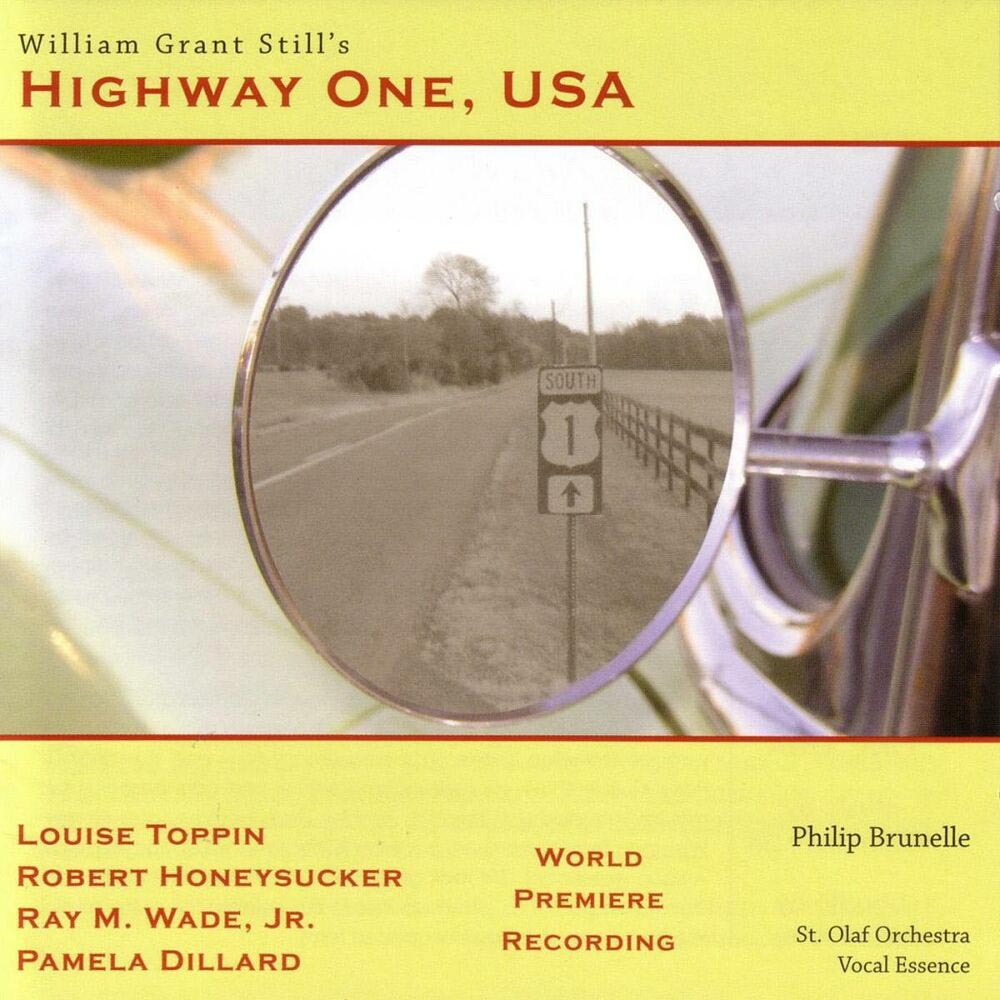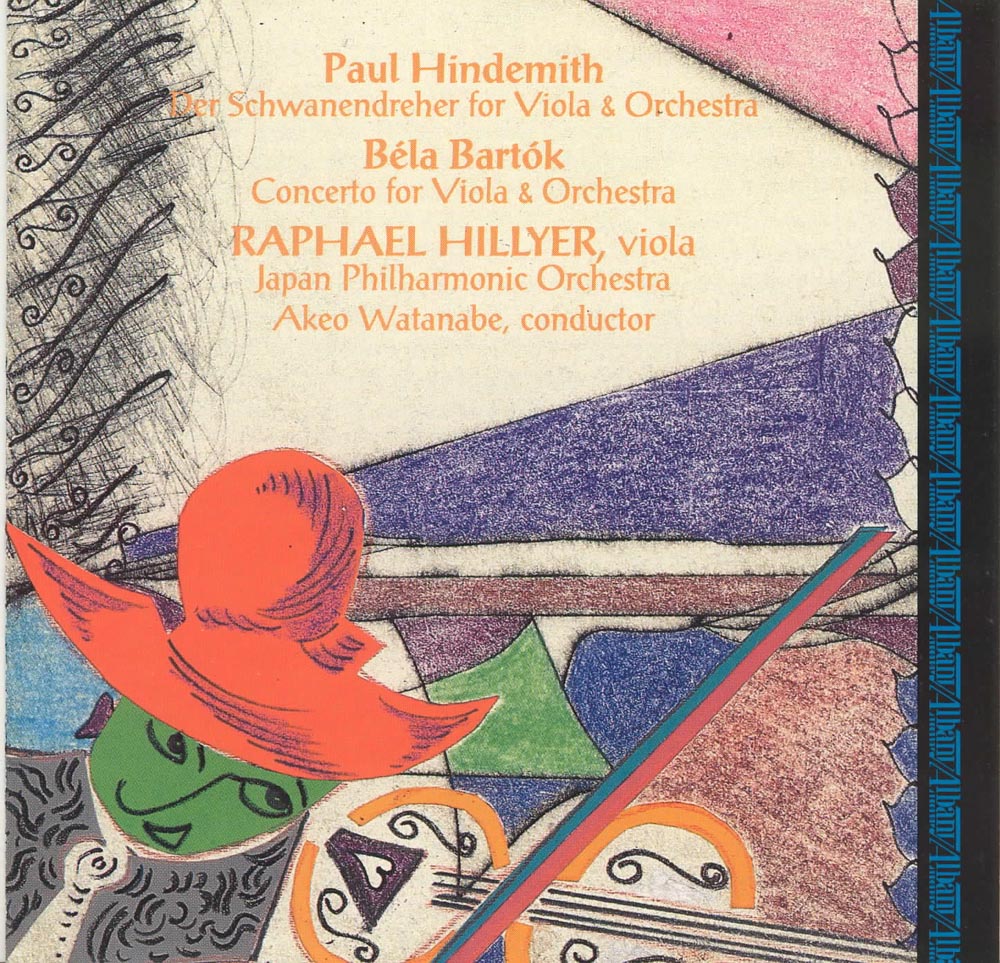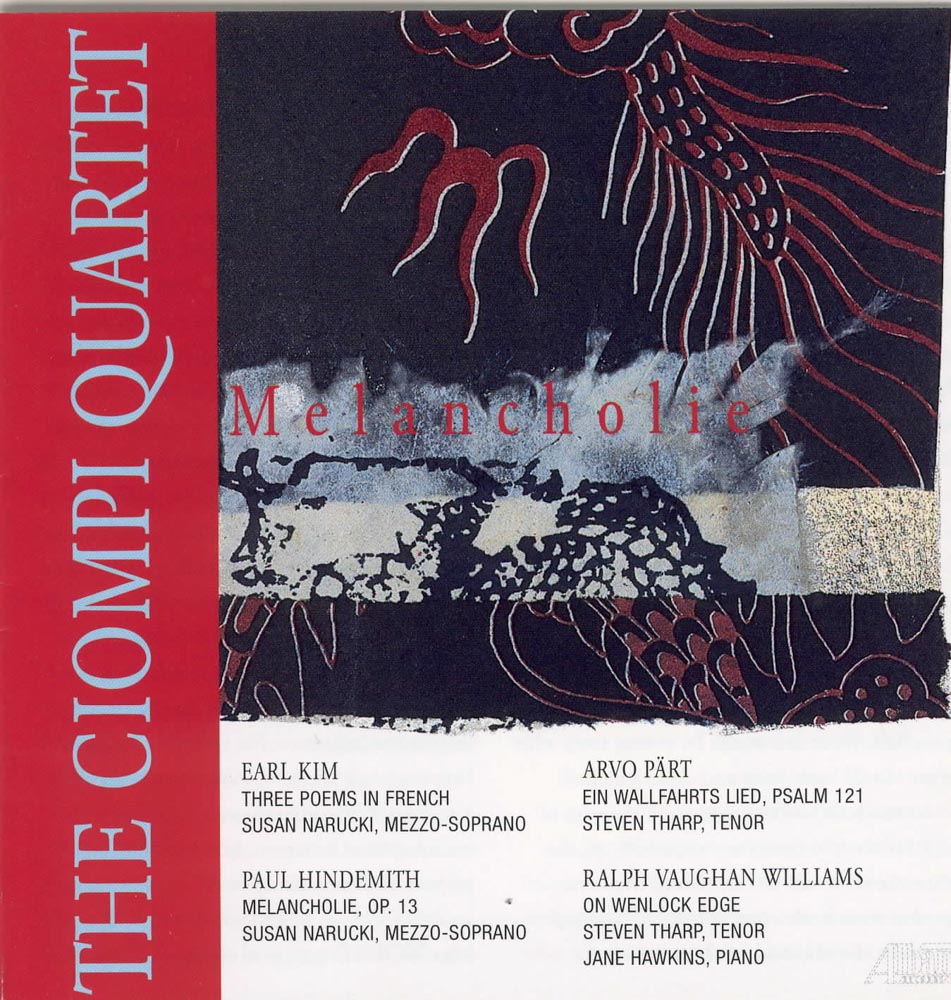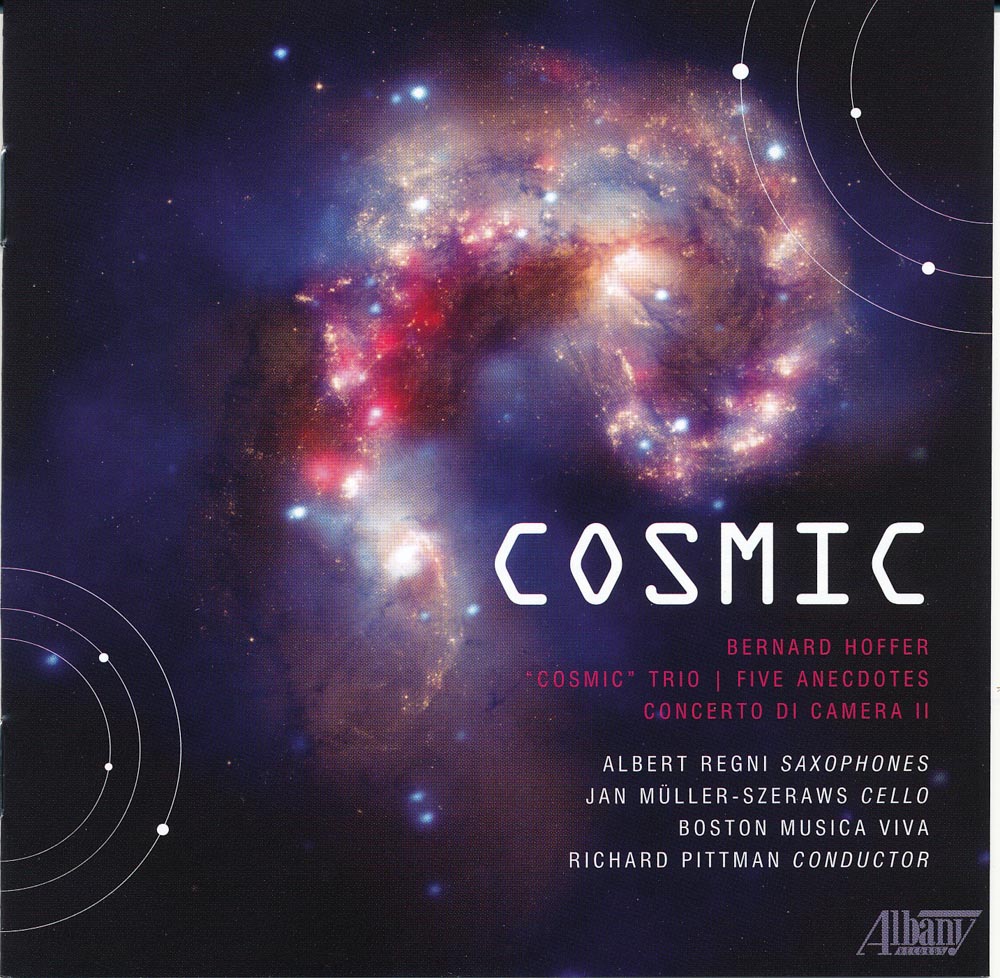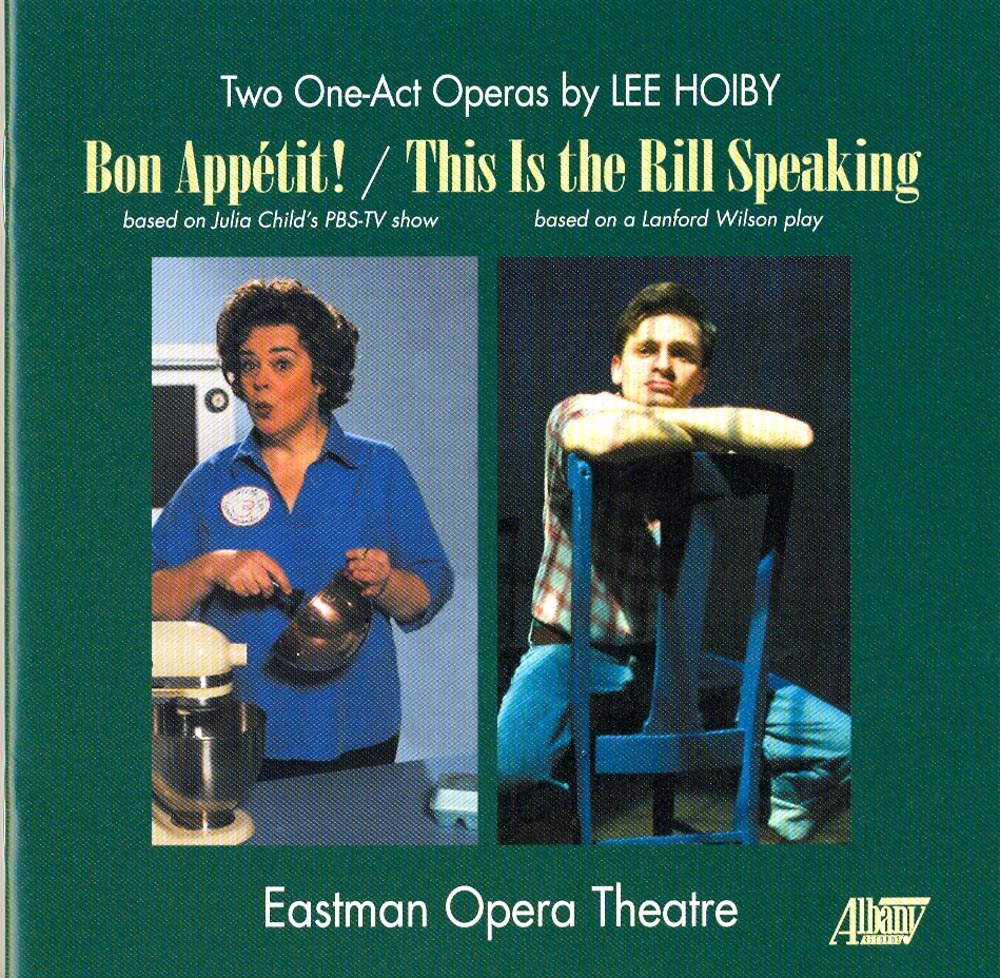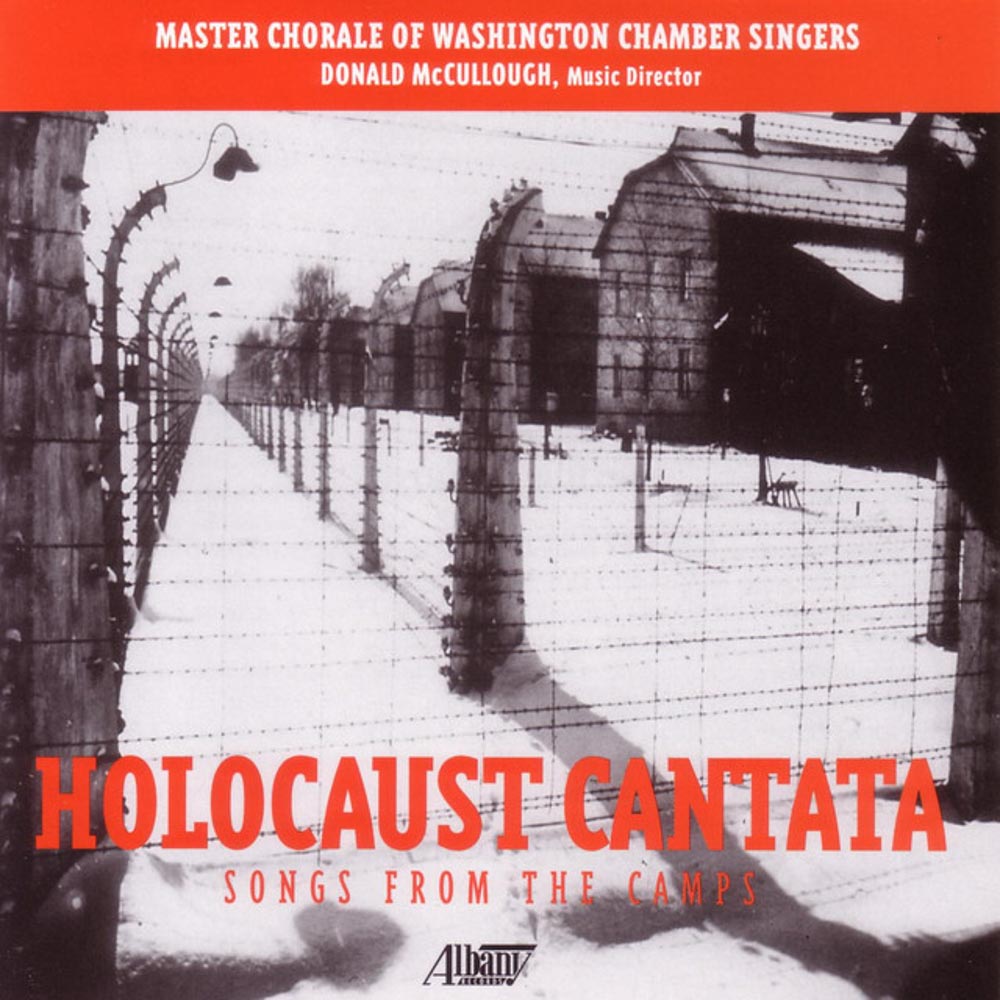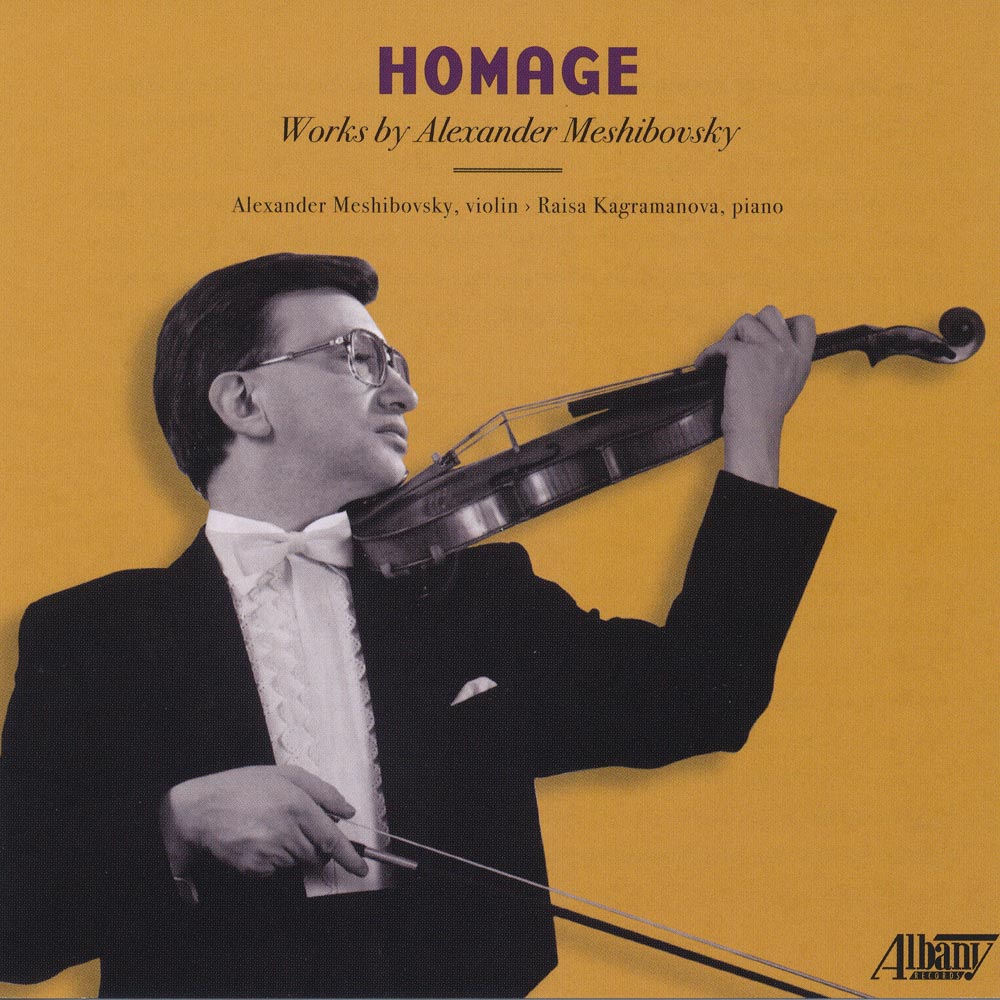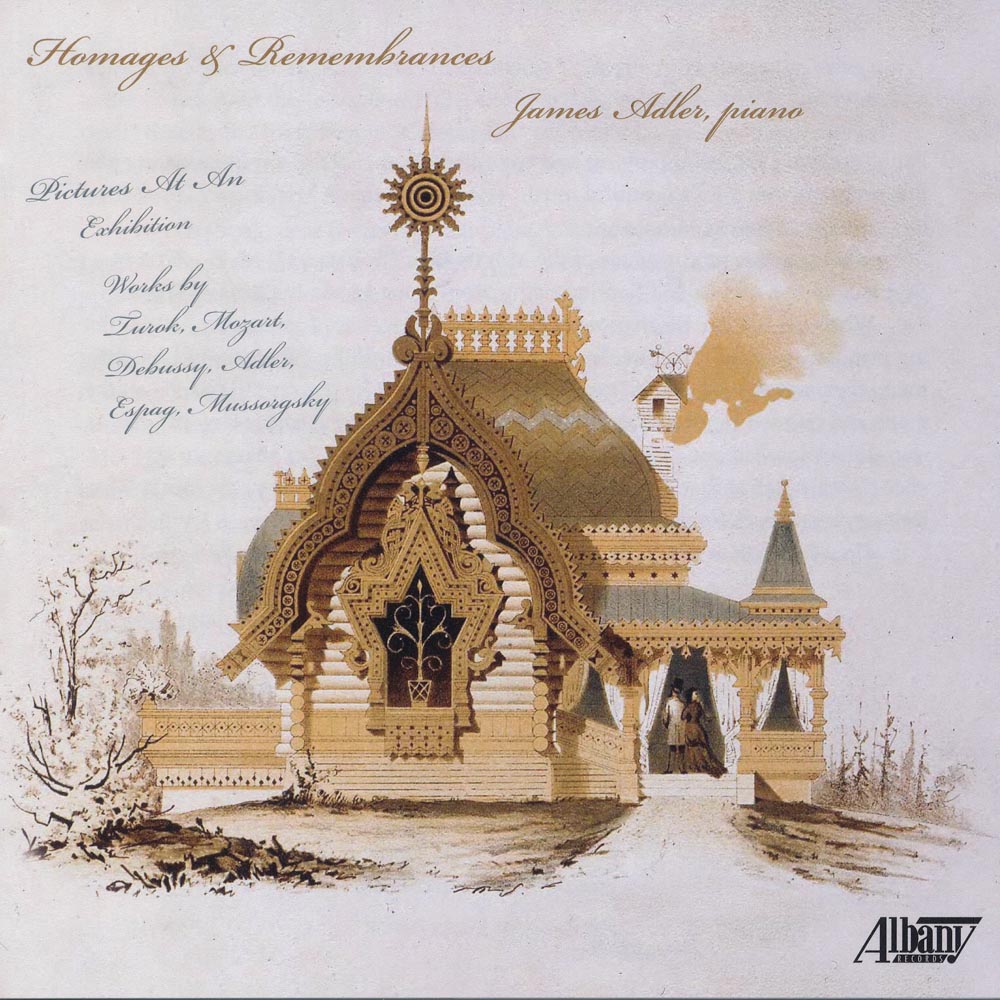Catalog #: TROY0515
Release Date: August 1, 2002OrchestralWith this release, the Albany Symphony Orchestra brings to light two major American symphonies that have been unjustly neglected for more than half a century. These works were conceived with great optimism and enthusiasm by their creators, young men then ascending the crest of celebrity and now ranked among America's most important 20th century composers. But both symphonies had difficult entrances into the world, their original spark dimmed by patchings and pasteups imposed to correct supposed musical shortcomings. In spite of the revisions both men acquiesced to, however, critical reaction to the symphonies was disappointingly mixed. Harris withdrew his piece. Gould's soon faded from the repertoire. This was the situation when the Albany Symphony Orchestra pursued programming both of these works. Having already recorded music by Gould and Harris, the orchestra had faith in the validity of the composers' initial creative impulses. A score and set of instrumental parts to the unknown original version of Gould's Third were tracked down. These were used for this recording. Then, Ray Bono, the Albany Symphony Orchestra's copyist, worked to restore the bulk of the original material Harris had expunged from his Second Symphony. Also, the errors in the almost 75 year old score and parts had to be corrected. It is this version of the symphony that is heard on this recording - the original version. The result? A pair of performances that masterfully recapture the original intent of two gifted creators approaching the peak of their form. They music they offer us is powerful, confident and dramatic. Sometimes quirky, always compelling, it is also unmistakably American. As such, it stands in openhearted contrast to the icily cerebral complexities resonating in Europe just before and after the devastation of World War II.
Catalog #: TROY1042
Release Date: September 1, 2008OrchestralWhat more could an advocate for American music want? This recording combines neglected works by well-known masters (Roy Harris' Symphony No. 11 and Gould's Cowboy Rhapsody) with masterful works by composers whose names may be unfamiliar (Douglas Moore's and Cecil Effinger's Symphonies). World premiere recordings that taken together make up as fresh, finely balanced and excitingly diverse a concert program as one could wish.
Catalog #: TROY1836
Release Date: August 1, 2020VocalJoseph Marx (1882-1964) was a bit of a musical late-bloomer. He earned a doctorate in 1909, having studied philosophy, art history, and German studies, and only later adding musicology. Castigated for his seeming cooperation with the Nazis, he also spoke out against the avant-garde, which he believed had ushered in the decay of Austrian musical culture. Among his works, there is a trove of more than 150 songs. In their time, his songs were loved and championed by famous Austrian singers but he and his music came to be largely ignored. Soprano Kendra Colton is a versatile singer who performs repertoire from Baroque opera and oratorio to contemporary music and enjoys an active performing career. Pianist Laura Ward is co-artistic director of Lyric Fest and is a distinguished collaborative pianist.
Catalog #: TROY0094
Release Date: August 1, 1993InstrumentalLola Odiaga, the Peruvian harpsichordist and fortepianist, continues her series of the complete works of Haydn for piano with this disc that features five sonatas from 1776. The mid- and later 1770s saw a relaxation in Haydn's compositional style, a move away from the stormy melancholy of the many minor key works written in the late 1760s and early 1770s. It is no coincidence that this was also a period in which the composer strengthened his ties with Vienna where he eventually took up residence in 1791. The "six sonatas of 1776" (so called in Haydn's catalog of his own works), of which five are featured on this recording, were the official property of Haydn's patron Prince Nikolaus Esterhçzy, but they could be purchased in Vienna, in manuscript copies, and from professional copy shops. Each sonata on the program ends with a finale in variation form, based either on a minuet or a contredanse, and this, along with the use of the minuet and trio as an internal movement, and the elements of folk song, suggests that in writing his six sonatas of 1776 Haydn aimed to appeal (though not to pander) to current Viennese taste. The fortepiano used in this recording is a copy of an Anton Walter instrument dated ca. 1790 built by Rodney Regier of Freeport, Maine. It has a compass of just over five octaves and - as was the case with the fortepianos of the period - in many ways resembles the harpsichord more than the modern piano.
Catalog #: TROY0045
Release Date: March 1, 1991InstrumentalThe keyboard sonata is an intimate genre suited to experiments in form and style. Haydn's cultivation of the sonata in all but the last years of his life creates a detailed illustration of his compositional development. The five sonatas recorded her reflect a relaxation in Haydn's compositional style, turning away from the stormy melancholy of the many minor key works written before 1772. Lola Odiaga, the acclaimed Peruvian harpsichordist and fortepianist, studied piano at the Juilliard School of Music in New York, and at the Hochschule fur Musik in Hamburg, and harpsichord at Yale University. Among her teachers were Edward Steuermann, Stefan Askenase, and Ralph Kirkpatrick. In addition to a teaching career that has included the National Conservatory of Music in her native Lima, Wellesley College, the Hartt College of Music, the Yale University School of Music, and Boston University School for the Arts, Odiaga has concertized as soloist with orchestras, and in solo and chamber music recitals in the United States and Latin America both as pianist and harpsichordist. Since 1983 she has been making appearances as a fortepiano performer.
Catalog #: TROY0018
Release Date: August 1, 1989OrchestralIn their different ways, the three symphonies on this recording show something of Haydn's experimental inclinations during the period in which they were written (the earliest being composed in 1767 and the latest in 1776). Among the hallmarks are sometimes an exaltation of vivid effect at the expense of formal and harmonic fluidity: dynamic contrasts are heightened, harmonic progressions emboldened, rhythms teased. There is growing contrapuntal sophistication, too, and in one movement each section is to be played both forward and backward.
Catalog #: AR0005-06
Release Date: December 1, 1988ChoralAlmost from the moment of its first performance, Haydn's The Creation was ranked as his greatest single achievement. For all his brilliance in composing symphonies, string quartets, operas, and masses over a period of decades, Haydn had never produced a composition of such scope, such variety, and such immediacy. Its text and Haydn's music gave the oratorio near-universal appeal, making it accessible and moving to listeners of every class and even of strongly opposed religious and political views. The Creation was as enthusiastically received by Vienna's Catholics as by her freemasons; Berlin's Lutherans and London's Anglicans and the revolutionary theists of Paris hailed it with as much fervor as the Viennese. For many it ranked with Handel's Messiah as one of the two greatest oratorios - and perhaps greatest musical compositions - ever written.
Catalog #: TROY0281
Release Date: February 1, 1998InstrumentalThis program features some of Haydn's earliest compositions, works that survive (in Christa Landon's words) only through "happy accident." Haydn himself felt no compunction to preserve his earliest efforts. When, in the last years of the 18th century, Breitkopf set about an authorized edition of Haydn's complete keyboard works (published 1800-1806), the composer, with a view towards posterity, expunged not only spurious works that had been published in his name, but also, as the preface explained, "those works of my early youth, which are not worth preserving." Those works that do survive from the 1750s and early 1760s are thus of particular interest, not simply as a measure of Haydn's subsequent development but also, as Landon remarks in the preface of her own complete edition of the composer's keyboard sonatas, because they possess "moments of such beauty that they should be kept alive by performance and not be allowed to fall into oblivion." Here on this new disc in Albany's continuing series devoted to the piano works of Haydn, you have the opportunity of hearing these early works for yourself and judging their value.
Catalog #: TROY0062
Release Date: December 1, 1991InstrumentalMozart and Beethoven were renowned pianists, while Haydn, in his own words "was not a wizard on any instrument." Yet recent research has emphasized the special significance of keyboard music and performance in the composer's life. Not only did he perform as soloist, organist and accompanist during his tenure at Esterhçzy but throughout his creative life Haydn cultivated the most respected genre of solo keyboard music - the sonata. The first three sonatas of this program were composed in 1773. They were published by Giuseppe Kurzback in Vienna in 1774, appearing in a set of six sonatas that Haydn dedicated to his patron Prince Nikolaus Esterhçzy. This was Haydn's first authorized publication, although copyists had been smuggling his works into print for some time. An obsequious dedication to Prince Nikolaus reminds us that Haydn's compositions were the official property of his patron. The last three sonatas in this program were written during the 1770s and published in Vienna by Artaria in 1780. A new contract between Haydn and his patron, dated 1779 reveals that Prince Esterhazy no longer had exclusive rights over Haydn's compositions. These sonatas appeared in a set of six dedicated to Katharina and Marianna von Auenbrugger, sisters who were celebrated fortepianists.
Catalog #: TROY1219
Release Date: October 1, 2010ChamberThe six compositions on this recording by the Armenian-American Hayg Boyadjian, cover a six-year period of his compositional output. Each was written for and is dedicated to specific musicians, although not all of them figure as performers on this recording. The musical language reflects Boyadjian's diverse background. Born in Paris of Armenian parents, he grew up in Buenos Aires and then relocated to the United States. He has drawn musical inspiration and materials from all these different cultures. Inspired by Boyadjian's interest in astronomy, the last work on the recording (Pleiades) was written for James Pellerite, who has dedicated himself to the native American flute.
Catalog #: TROY0846
Release Date: May 1, 2006VocalHall Johnson was a noted violinist, conductor and arranger of spirituals. The slave songs and spirituals that he heard his grandmother sing were a catalyst for him founding the Hall Johnson Choir in 1925. The ensemble appeared on Broadway and in movies such as Green Pastures. To quote Eugene Simpson, curator of the Hall Johnson Collection at Rowan University, "Johnson's entire compositional output was governed by three beliefs: that his role in life was the preservation and propagation of the Negro Spiritual in its authentic form; that the melodies and rhythms of the spiritual and Negro folk song were worthy material for compositional development into art and extended forms and that the spiritual itself is essentially a choral form." Louise Toppin has received critical acclaim for her operatic, orchestral and oratorio performances both here and abroad. Along with pianist Joseph Joubert, they have undertaken this unique project to present a CD that focuses entirely on Hall Johnson's solo vocal works. In presenting arrangements both familiar and lesser-known, this collection celebrates the historical importance, innovation and contribution of Johnson as a preserver of the spiritual while acknowledging his influence on subsequent generations of arrangers.
Catalog #: TROY1314
Release Date: November 1, 2011VocalThe art song cycles and collections crafted by the American composers on this recording musically document African-American culture through poetry, historical subjects, the diaspora and vernacular elements. This is a contemporary view of the art song tradition in world premiere recordings. Louise Toppin has received critical acclaim for her operatic, orchestral, and oratorio performances around the world. In addition to opera performances, including Lee Hoiby's one-woman opera The Italian Lesson, Ms. Toppin tours in Gershwin on Broadway.
Catalog #: TROY1166
Release Date: February 1, 2010ChoralThe story of the wide-eyed lad from Kansas City who became the toast of Paris via Harvard, one of America's most influential music critics from his decades' long perch at the New York Herald Tribune and a truly unique and productive composer, is almost hackneyed now, but still bears that "only in America" cachet. It was as a long-term resident of the Chelsea Hotel in New York that Gregg Smith and his Singers got to know the redoubtable Virgil in the later decades of his long life (born in 1896, he died at the age of 92 in 1989.) The present CD is an offering of gratitude for Virgil's support and friendship, as well as a concise overview of his work in the choral field--along with a brief excursion into his solo output.
Catalog #: TROY0309
Release Date: December 1, 1998Wind EnsembleThe music of David Maslanka is one of the consistent best sellers on Albany Records. About the music on this disc, the composer writes: "My Symphony No. 2 was commissioned by the Big Ten Band Directors Association and was dedicated to my teacher and friend, H. Owen Reed, on the occasion of his 75th birthday. It premiered in 1987 at the College Band Directors National Association convention at Northwestern University with John P. Paynter conducting. The symphony is in three movements. Laudamus Te was written for and dedicated to the Mount St. Charles Academy Symphonic Band of Woonsocket, Rhode Island, Marc Blanchette, conductor. The words "laudamus te" (we praise you) are form the Gloria of the Latin Mass. The idea has been brought forward over time that the true function of the human race is to sing praise. Laudamus Te is a piece in which the voice of praise arises out of darkness. Hell's Gate (1996) was commissioned by the Hellgate High School Symphony Band, John H. Combs, conductor. The title "Hell's Gate" started as a simple twist on the name "Hellgate." "Hellgate" is the name given to a section of Missoula, Montana where the Clark Fork River flows through a mountain pass (Maslanka lives on a ranch in Montana). Local Indians suffered many surprise attacks by rival tribes at this place, leading French settlers to give it the name "Hells Gate." Thus the title for my piece."
Catalog #: TROY1312
Release Date: January 1, 2012OperaAs Susan Hawkshaw points out in her notes, Jack Beeson is primarily known for his large scale opera, Lizzy Borden, premiered and revived by the New York City Opera. But actually five of Beeson's ten operas are chamber operas because of the scale of the story. The two operas on this recording fall into this category. They are gems of vocal beauty, formal construction and evocative musical writing that deserve wider recognition and a fresh performance. They stand as major contributions to the corpus of 20th century American opera. More than 30 years separate these two operas: Hello Out There, written when Beeson was 32, was premiered in 1954 and Dr. Heidegger's Fountain of Youth, written with librettist Sheldon Harnick, was premiered in 1978.
Catalog #: TROY0591
Release Date: July 1, 2003OrchestralA self-declared adversary of what he termed "the danger of academicism and dogmatism in the musical arts," Nikolai Lopatnikoff came to the United States in 1939 by way of England, Germany, Finland, Russian and Estonia where he was born. He taught at the Hartt College of Music and Westchester Conservatory in upstate New York before settling at the Carnegie Institute in Pittsburgh. His compositions - including four symphonies, various orchestral pieces, the opera Danton and the ballet Melting Pot - were known for their melodic strength and aggressive, racy drive. That Lopatnikoff counted the melodist Borodin and the rhythmically demonic Hindemith among his early influences is no surprise. His Festival Overture was commissioned by the Pittsburgh Plate Glass Company and was dedicated to the "automobile industry of America." Born in Passaic, New Jersey, Robert Helps graduated from the Juilliard School and did postgraduate work at Columbia University and the University of California. His composition teachers included Roger Sessions and Milton Babbitt. He taught piano at Berkeley, the San Francisco Conservatory, the New England Conservatory and the Manhattan School of Music. "In a country as big as ours," says Pulitzer Prize-winning composer John Harbison, referring to his friend and one-time piano teacher, the late Robert Helps, "there are many hidden first-class artists." Just as Virgil Thomson's Four Saints was a landmark opera, his Filling Station was a ground breaking ballet - the first to showcase an American choreographer (Lew Christensen), an American dance company (American Ballet Caravan, precursor to the New York City Ballet), and American designer (the infamous painter Paul Cadmus) and a down-to-earth American setting (a gas station) - all bound up with Thomson's mock-grandiose and pop inspired music. Filling Station premiered on January 6, 1938 at the Avery Memorial Theater in Hartford, Connecticut. The version performed on this SACD is the entire ballet, uncut. "There is a degree of freshness and impetuosity that defines Kurka as an imitator of nobody. It must stand as the insufficient summation of a talent that was only beginning to find itself when Kurka died in the fall of 1957." Thus read the Saturday Review's critique of the 1959 Carnegie Hall premiere of Robert Kurka's Second Symphony. Kurka's promising career ended abruptly when he died of leukemia at the age of 35. He was born in Illinois and received his music degrees from Columbia University. Although described as largely self-taught, he did study composition briefly with Darius Milhaud and Otto Luening. He himself taught at the City College of New York, Queens College and Dartmouth. On the premiere performance of the Symphony No. 2 on July 9, 1958, the San Diego Evening Tribune reported, "It swells with the teeming rush of the metropolis. Kurka's Symphony is mindful of the best traditions of the 19th century. Everyone who has heard this wonderful work has enjoyed it and now it is your turn.
Catalog #: TROY0804
Release Date: November 1, 2005ChamberYou may already be familiar with Mr. Martin from his collection of Preludes and Fugues that have appeared on other labels. He is currently professor of music at Rutgers University in New Jersey, and has pursued a career as a composer-pianist specializing in jazz and Western tonal tradition. His teachers have included Milton Babbitt and David Del Tredici. The works on this disc exemplify Martin's attraction to past influences and how tonality is still a viable form of expression. The Piano Trio is his own take on the Brahms works in that form; the Sonata for Solo Cello, which he describes as one of his darker works, was inspired by the Bach Cello Suites. A more "modern" work, This Living Hand is based on the writings of John Keats, which also influence Sweet Converse. The three members of Innisfree all have musical connections to the Northeast; all are members of or have performed with the Hudson Valley Philharmonic and its associated String Quartet. This is an exceptional disc for those who believe that the Romantic impulse is still alive in today's music.
Catalog #: TROY1171
Release Date: May 1, 2010InstrumentalThis selection of piano music by Henry Martin composed between 1980 and 2007 has a place within both the composer's broader work and the literature for piano to which it makes a valuable contribution. Over the years, Martin has composed for chorus, orchestra, string quartet, various smaller ensembles, and solo instruments; but many of his works involve the piano, and about a score of them are for solo piano. All facets of Martin's life (pianist, music theorist, educator) come through in this music that is so beautifully performed by the noted pianist Hilary Demske. The listener to these pieces can look forward to rewards for the heart as well as the mind.
Catalog #: TROY0432
Release Date: February 1, 2001OperaWe are so pleased to be able to offer this month the first complete CD recording of Victor Herbert’s beloved two-act classic romantic operetta, composed in 1910 and set in New Orleans. This performance was recorded live at the Ohio Light Opera 2000 Summer Festival by John Ostendorf. About this production, James Stuart, the founder of the Ohio Light Opera Company writes: “For summer 2000, Steven Daigle approached me in planning his first full season as Artistic Director. He wanted to undertake Marietta. He felt we should try to go back to the original materials and produce the show that had earned Victor Herbert such a triumph, with its beautiful melody, its tenderness, humor and resounding choruses. Steven’s mounting of the opera was a grand success. In its original form the relation of parts to one another makes much more sense. Free of excesses, the emphases now seem to fall in their proper places: the show is much tighter and the wonderful songs, following one on top of the other, leave the listener breathless.”
Catalog #: TROY0936
Release Date: May 1, 2007ChamberGerald Levinson was raised in Connecticut and has been increasingly recognized as one of the major composers of his generation. His principal teachers were George Crumb, George Rochberg and Richard Wernick at the University of Pennsylvania, and Ralph Shapey at the University of Chicago. This is the second Albany CD devoted to the music of Gerald Levinson, following TROY742, a collection of three chamber-orchestra works released in 2005. Critic Paul Griffiths has written, "What must thrill anyone who comes into contact with Gerald Levinson's music is its sheer joy in sound, and the decisiveness with which it sings or dances its way through time...In sympathy with sound, in sympathy with time, Levinson's music is close to the natural phenomena on which all music depends. Two things spring from this. One is that his music can easily evoke other natural phenomena: the sea, the stars, rugged landscapes. The other is that this music is in tune with other kinds of music from around the world. Levinson's resources are classical western: he writes for the symphony orchestra, for the piano, and for chamber groupings of conventional instruments. His disciplines, too, are those of the western tradition. But the east was present in his music even before his first trip there. His works, right through his career so far, exist on companionable terms with Mahler's music and with Bali's, with Ravel's and with Japan's, with Messiaen's and with India's, with Stravinsky's and with China's, with America's symphonic tradition and with Tibet's slow melody. Out of all this he is creating, piece by piece, a world of his own."
Catalog #: TROY0304
Release Date: October 1, 1998OrchestralAs founder and president (1974-1995) of Meet The Composer, an Organization dedicated to the creation, performance, and recording of music by American composers, John Duffy initiated countless programs to advance American music and to aid American composers. But there is another side to John Duffy. He has composed more than 300 works for symphony Orchestra, theater, television and film. He grew up in the Bronx, one of 14 children of Irish immigrant parents. He studied with Copland, Cowell, Dallapiccola and Solomon Rosowsky whom he credits with insisting uncompromisingly on learning the craft of music composition and developing the discipline and patience necessary to the art. The Heritage music on this disc is a reissue of the music on the old ASV disc which has been long unavailable. The performance of the Symphony No. 1 is a new one and is different from the one that appears on Koss Classics. Heritage, Fanfare and Chorale, Heritage Suite for Orchestra and Heritage Symphonic Dances have all been drawn by Mr. Duffy from the score he composed for the nine-hour PBS series Heritage: Civilization and the Jews. This wonderful, stirring music earned for Mr. Duffy an Emmy. The Chicago Tribune called the music "haunting, memorable and brilliant." The Utah Chapter of the Sierra Club, Gibbs Smith, president, commissioned Symphony No. 1 in order to draw attention to the endangered, pristine wilderness lands of southern Utah. The score is dedicated to Mr. Smith and the Sierra Club. The Symphony was premiered by Paul Connelly and the Orchestra of St. Luke's at Avery Fisher Hall in New York City on November 29, 1989. Mr. Duffy's tuneful, energetic music should find a large and welcome audience.
Catalog #: TROY0346
Release Date: September 1, 1999ChamberHere is a delightful sound - four trombones; mellow, rich. Admittedly, this will have appeal mainly to your customer who enjoys brass music. Hopefully, they will give this disc a try. Steven Witser has served as Assistant Principal Trombone of The Cleveland Orchestra since 1989 and is a member of the Center City Brass Quintet. Edward A. Zadrozny is an Associate Professor of Trombone at the University of Akron and Principal Trombone of the Akron Symphony Orchestra. Paul Ferguson has been director of Jazz Studies at Case Western Reserve University in Cleveland since 1988. Raymond Premru was Professor of Trombone at the Oberlin Conservatory from 1988 until his death in 1998.
Catalog #: TROY0629
Release Date: December 1, 2003InstrumentalPatti Monson is the flutist for the New York new music ensemble Sequitur and The Curiously Strong Wind Quintet. She has been a guest artist on many recital series dedicated to new music and holds degrees from the Eastman School of Music and the Yale University School of Music. Her teachers have included Robert Dick, Bonita Boyd and Samuel Baron. She is currently on the faculty of the Manhattan School of Music, as director of the MSM contemporary ensemble TACTUS. She writes: "High Art - chamber music for solo flute is the second disc in a series of recordings to be dedicated to multi-voiced works for one flutist. I have always been enchanted by the Telemann Fantasies, Bach Partitas and other such magical works where pitches transcend their rhythmic values, and allow the solo musician to be playing multiple melodic lines at once. In the 20th and 21st century, composers are sharing similar passions. I am thrilled to present these works, which represent for me an exciting union: the personalities of musics composed during my lifetime and the traditions of my Baroque heroes. In this recording, the composers were invited to be the producers of their recordings."
Catalog #: TROY0734
Release Date: March 1, 2005OperaIt, regrettably, comes as a surprise to many, including highly informed and well-trained musicians that among the most important of the compositions of William Grant Still are his several operas. (NOTE: The Eileen Southern Biographical Dictionary of African American and African Musicians of 1982 lists six operas, but in fact there are nine). In addition to Highway One on this recording, there are also the operas: Blue Street, Troubled Island, A Bayou Legend, A Southern Interlude, Costaso, Mota, The Pillar, and Minette Fontaine. Judith Anne Still writes: "I will say this, my father had three loves in his life, in this order of importance: the Creator, his family, and the world of opera. He wanted most of all to be known as a composer of operas of great merit. He worked towards this goal with all his heart and mind, from the age of 14 until he became ill in the early 1970's, for 75 years. Most opera companies in the 20th century would not do the operas of William Grant Still because of his color. The fact that Still operas were not done, while Porgy was done, broke the composer's heart. There is much to be accomplished by way of justification. I am grateful to my parent's for dedicating this opera to me and my family, and to Louise Toppin, Philip Brunelle and VIDEMUS for putting their enormous talents and energies into this project. Bravo to the immortals who have opened the road to realizing the long-ago dream of a kind, noble and magnificently gifted man."
Catalog #: TROY0076
Release Date: December 1, 1992OrchestralThe fact that the word violino means "little viola" might suggest that the alto of the string family was in fact the primary instrument from which the others developed. Not so; the viola inherited the name of its illustrious predecessor, the viol, but not is prominence. The modern viola has been slow to make its way. Eighteenth century composers mostly ignored it or left it to double the violins or cellos; even Beethoven never trusted his orchestral violas with an independent solo part. Even the double bass could boast of several famous virtuosi, but the only important solo viola part before the end of the 19th century was written by Berlioz for Paganini! The notion that the viola is a failed violin dies hard, and outside of chamber music, it is only in relatively recent times that the viola has finally become established as an instrument with its own manner of expression and its own repertoire. The liberation of the viola has been in part accomplished through the pioneering efforts of outstanding performers like the Britishers Lionel Tertis and William Primrose who literally called forth - commissioned or inspired - a whole repertoire. The Bartok Concerto on this recording was one of these commissions for William Primrose but the Hindemith Viola Concerto came about because Hindemith himself was an important performer on the viola. Raphael Hillyer was a member of the Boston Symphony Orchestra under Koussevitsky and the NBC Orchestra under Toscanini. He was a founding member of the Juilliard String Quartet and been a soloist with orchestras in the United States and abroad.
Catalog #: TROY0603
Release Date: November 1, 2003ChamberThis recording was sparked by concerts in New Hampshire and North Carolina performed by the Ciompi Quartet with guest artists, Susan Narucki and Steven Tharp. The Quartet loved working with both singers, and had the idea that a disc of music featuring a solo singer with string quartet would be both unusual and intriguing. Each of the four works on this disc is wonderfully evocative, and each exploits the medium extremely well. The title for the CD, Melancholie, is taken from the Hindemith cycle, but it also expresses the overall feeling of the four works. The two larger pieces on this CD, Hindemith's Melancholie and Vaughan-Williams' On Wenlock Edge, have interesting parallels. Both are works by young men who went on to have long and distinguished careers, both works represent a coming of age for their respective composers, and both composers must be counted among the major figures of 20th century music with many works now in the standard repertoire. Both of the other works, by Kim and Part continue the theme of melancholy.
Catalog #: TROY1373
Release Date: October 1, 2012ChamberMembers of the renowned Boston Musica Viva perform three works by Bernard Hoffer, including a work commissioned by them, Concerto di Camera that features their spectacular cellist Jan Müller-Szeraws. Born in 1934 in Zurich, Switzerland, Bernard Hoffer attended Eastman where he studied with Bernard Rogers, Wayne Barlow, Paul White and Herman Genhart. After serving as arranger for the U.S. Army Field Band of Washington, D.C., he settled in New York, working as a freelance musician, composer, conductor and arranger. He is known not only for his chamber and orchestral music but also for works written for films, television and commercials, including the theme for the PBS New Hour, PBS's The American Experience and the hit children's cartoon series Thundercats.
Catalog #: TROY1028
Release Date: May 1, 2008OperaTwo one-act operas by the incomparable Lee Hoiby: Bon Appétit! was written for Jean Stapleton in her late career with music draped over the words and gestures of Julia Child, the mother-of-all foodies. This is the Rill Speaking, with libretto by Mark Shulgasser, is based on a seminal early work by playwright Lanford Wilson, first produced in 1965. It is of the genre of plotless, multivocal evocations of the 20th century small town. Into this theme Wilson introduced that of the birth of the writer, and his short play observes the seed of creativity. Hoiby's musical setting is water to that seed, bringing forth new branches, leaves and berries.
Catalog #: TROY1987
Release Date: November 1, 2024ChoralHOLIDAY JOY by Essential Voices USA, under the direction of acclaimed conductor Judith Clurman, offers a moving celebration of light, peace, and joy for the holiday season. This collection brings together three evocative works: Eight Days of Lights and Chanukah Joy and Peace, composed by Clurman and David Chase, and The Holidays Are Here, co-written by Clurman and Wesley Whatley. Through a blend of Jewish liturgical traditions and festive Christmas spirit, the album illuminates the universal need for light and hope in dark times.
With vivid instrumental arrangements for piano, clarinet, and cello, and stunning performances by Essential Voices USA, HOLIDAY JOY creates a sense of warmth and unity, inviting listeners to reflect on freedom, resilience, and shared celebration. Each piece not only honors its historical and cultural origins but also breathes new life into holiday music, making this album an inspiring and joyful experience for all.
Catalog #: TROY0352
Release Date: November 1, 1999ChoralIt is well-known that during the Holocaust inmates wrote music while incarcerated in concentration camps. What about the music that was composed by the common man in these camps? Music embraced by the whole community and passed secretly by aural transmission - music that carried with it powerful words revealing different aspects of camp life, or expressing the inmates' innermost feelings, of mourning, resistance, or patriotism? Was there another Holocaust music from the one we are more familiar with today? Was there a music that spoke with startling immediacy to express the agony of the victims of the Nazi regime? It was this question that first led Donald McCullough on a year-long journey through one of the cruelest chapters of the 20th century. His quest, to extract from the mammoth archives of the United States Holocaust Museum, the material that formed the basis of the Holocaust Cantata , was, like all difficult endeavors, marked with equal amounts of intuition and good luck. The result is the music heard on this disc.
Catalog #: TROY1673
Release Date: June 1, 2017ChamberBorn in Kharkov, USSR, Alexander Meshibovsky began violin lessons at the age of five. He studied at the Special School of Music for Gifted Children and graduated from the Kharkov Conservatory. After graduation, he was invited to be represented by te Russian Concert Agency, later becoming represented by the Moscow Concert Agency, under whose auspices he toured the USSR performing as a recitalist and soloist. He has studied with both renowned violinists Adolph Lestchinsky, Boris Goldstein and Jascha Heifitz. Since leaving Russia, he has continued his careeer performing with major European and American orchestras and has performed as a recitalist in Germany, Austria, France, and Norway. As a composer he has concentrated on works for violin and this debut recording of his music receives virtuoso performances from him and his colleague, pianist Raisa Kagramanova.
Catalog #: TROY1781
Release Date: July 1, 2019InstrumentalPianist James Adler has recorded a recital that pays homage to people who have been great influences and offers musical remembrances of important people in his life. The longest work on the program, Pictures at an Exhibition is dedicated to his mother and his aunt, both of whom encouraged him in his pursuit of music. James Adler is a pianist who "can create whatever type of music he wants at the keyboard" (Chicago Sun-Times) and a composer who writes "with uncommon imagination" (Atlanta Journal-Constitution). Mr. Adler made his orchestral performing debut with the Chicago Symphony Orchestra and has appeared in recital at famous venues around the world. His discography includes recordings on the Albany, Capstone, Navona, and Ravello record labels.
Catalog

©2024 Albany Records. All rights reserved. | Privacy Policy | Website by PARMA Creative.
